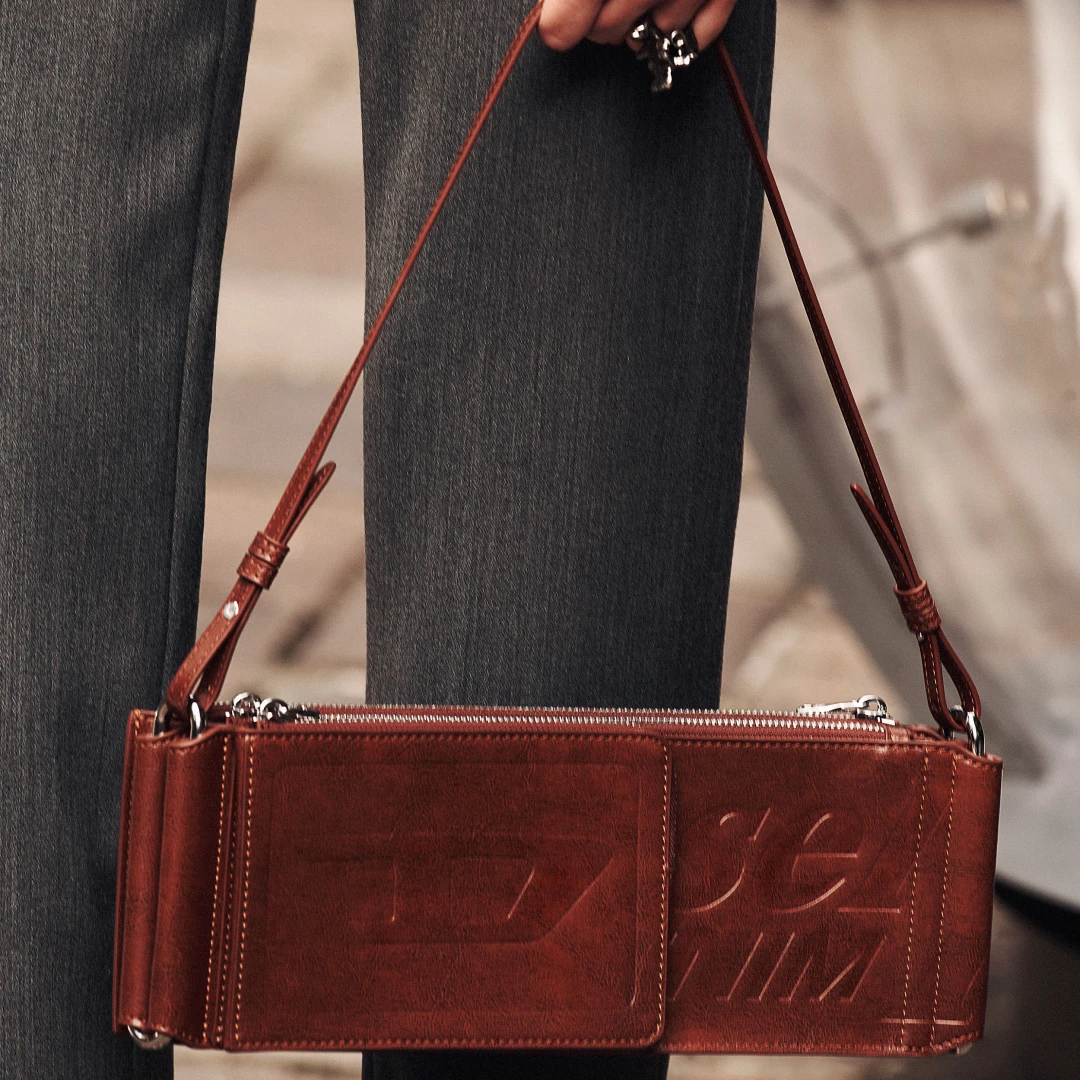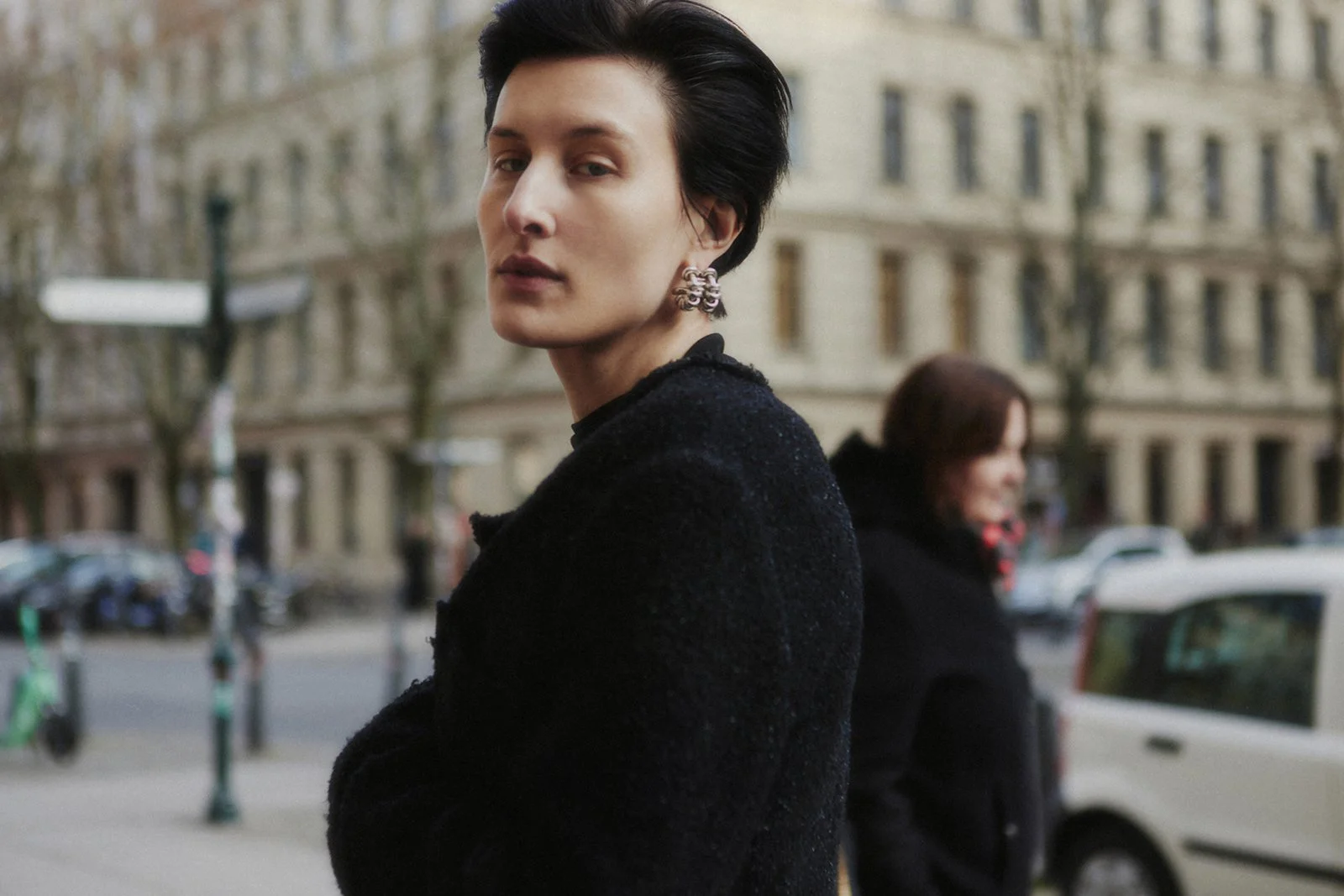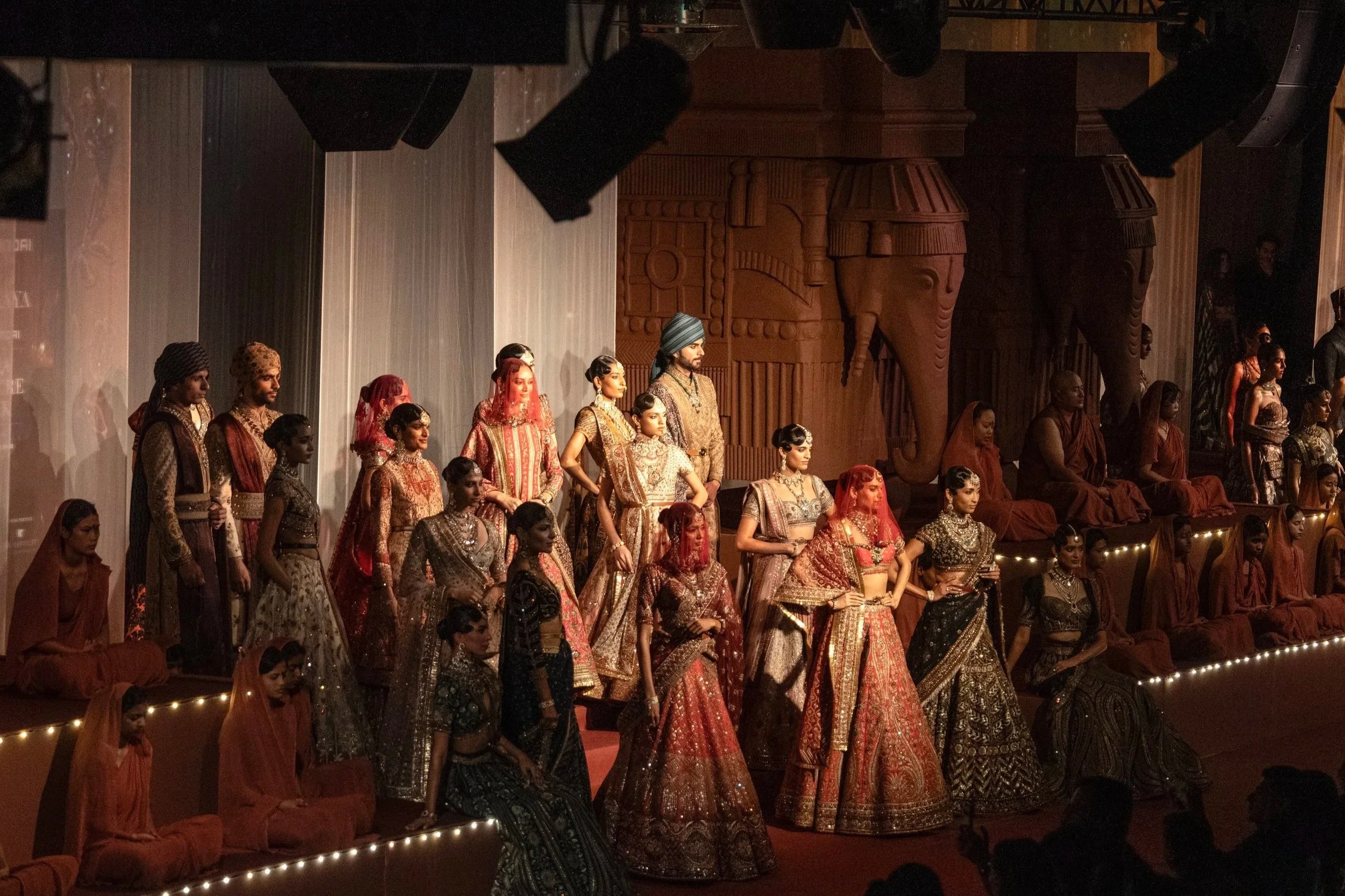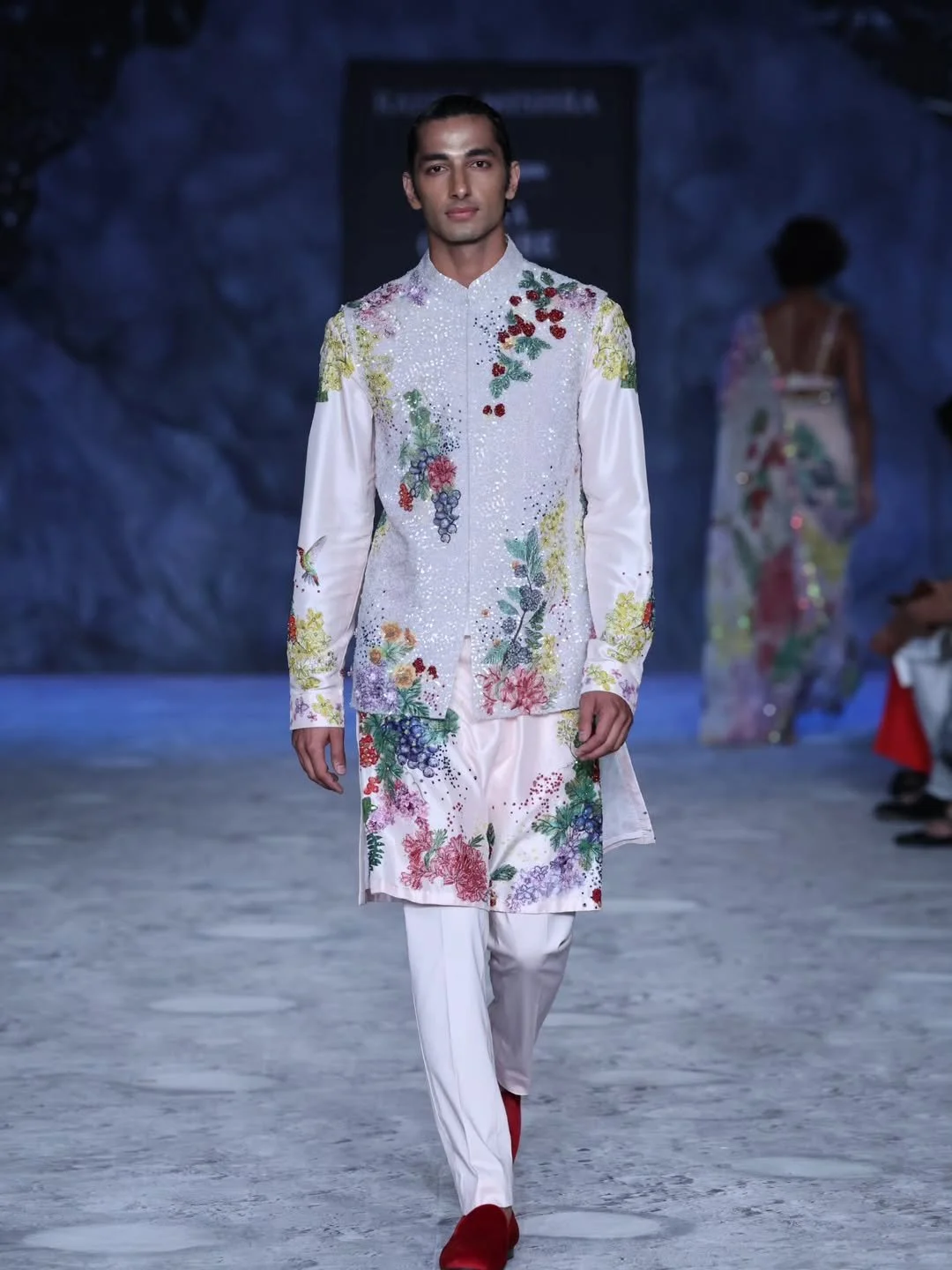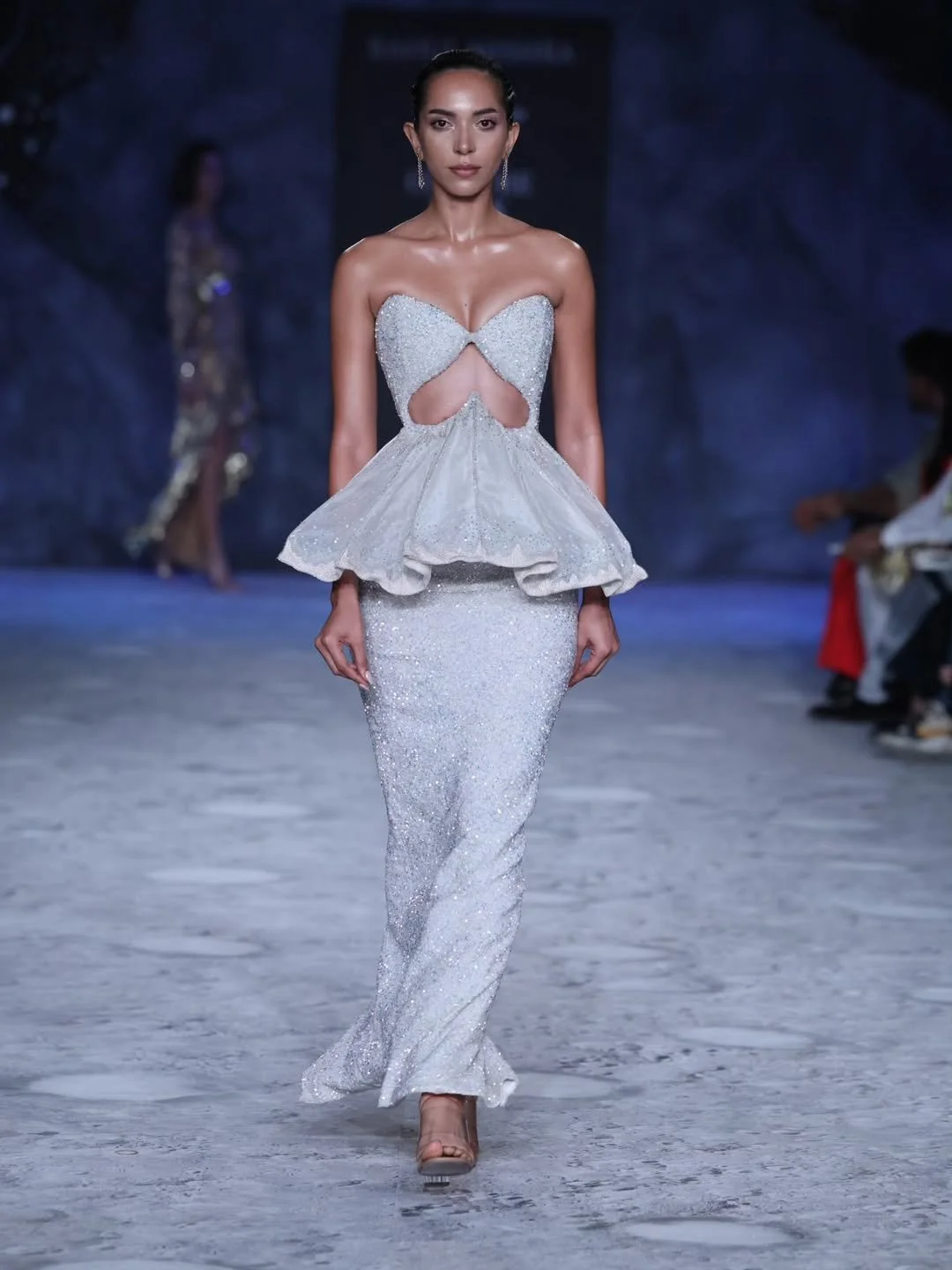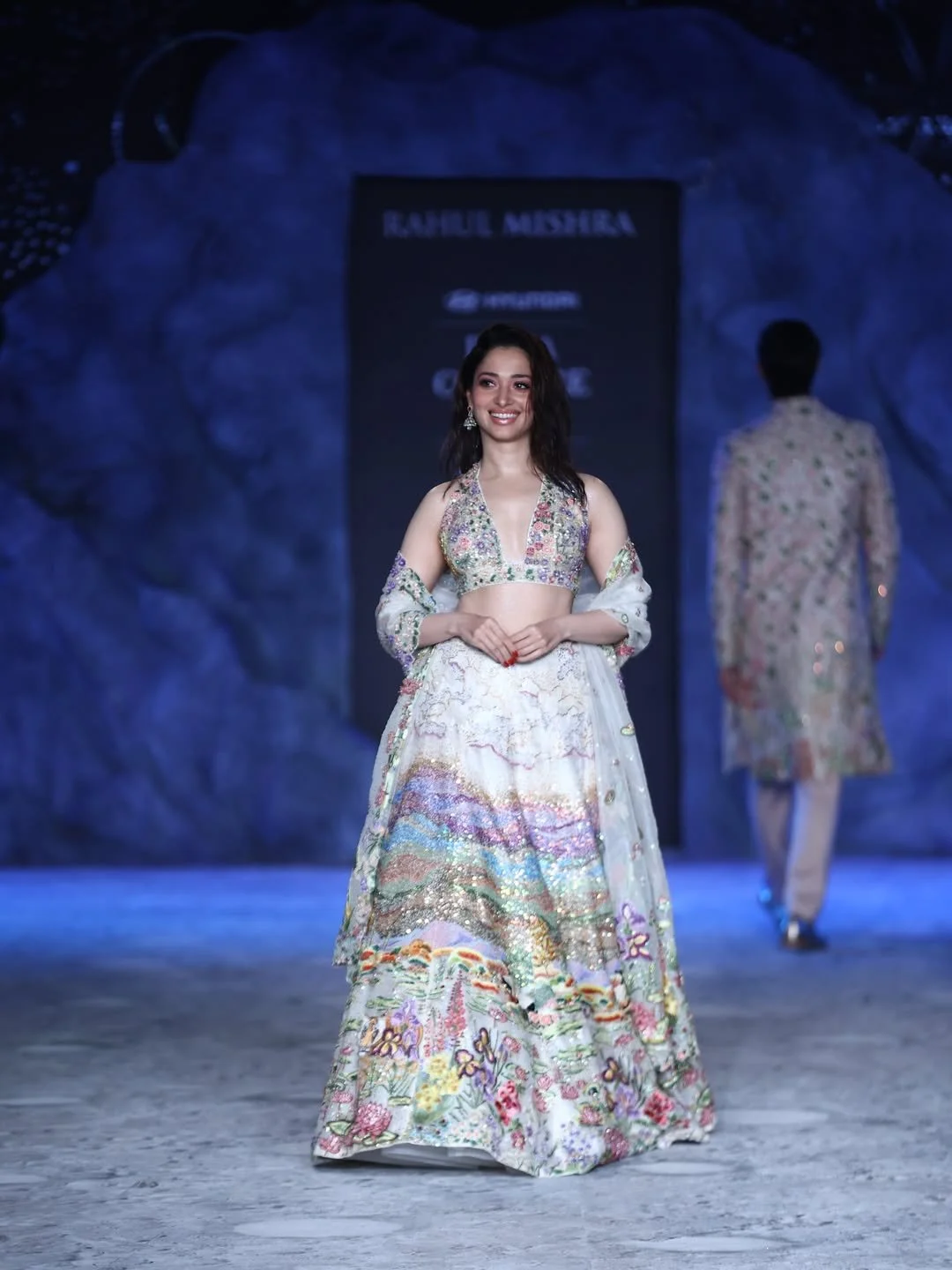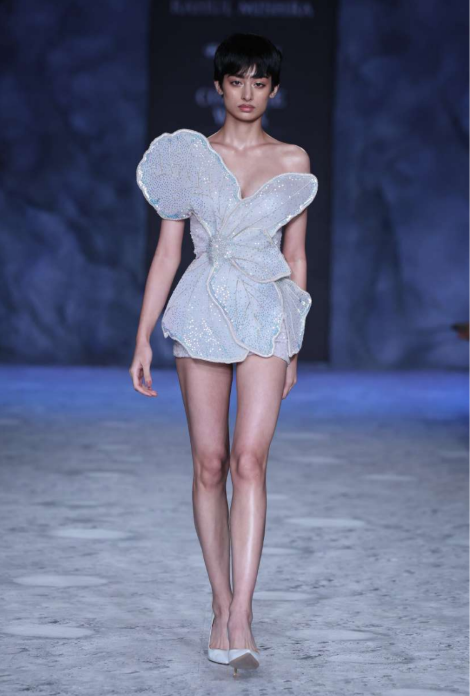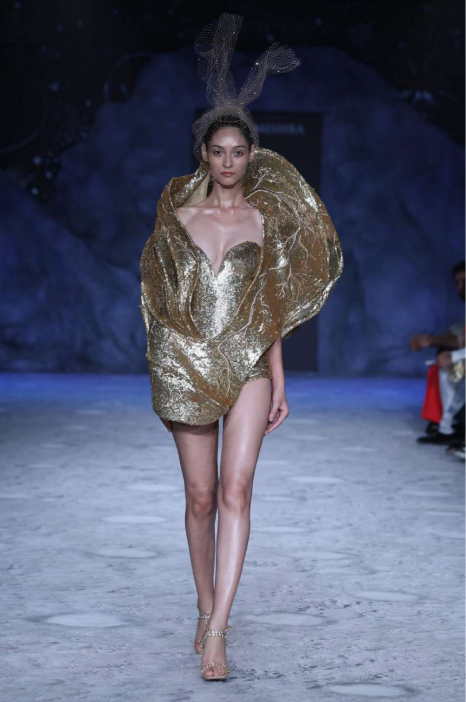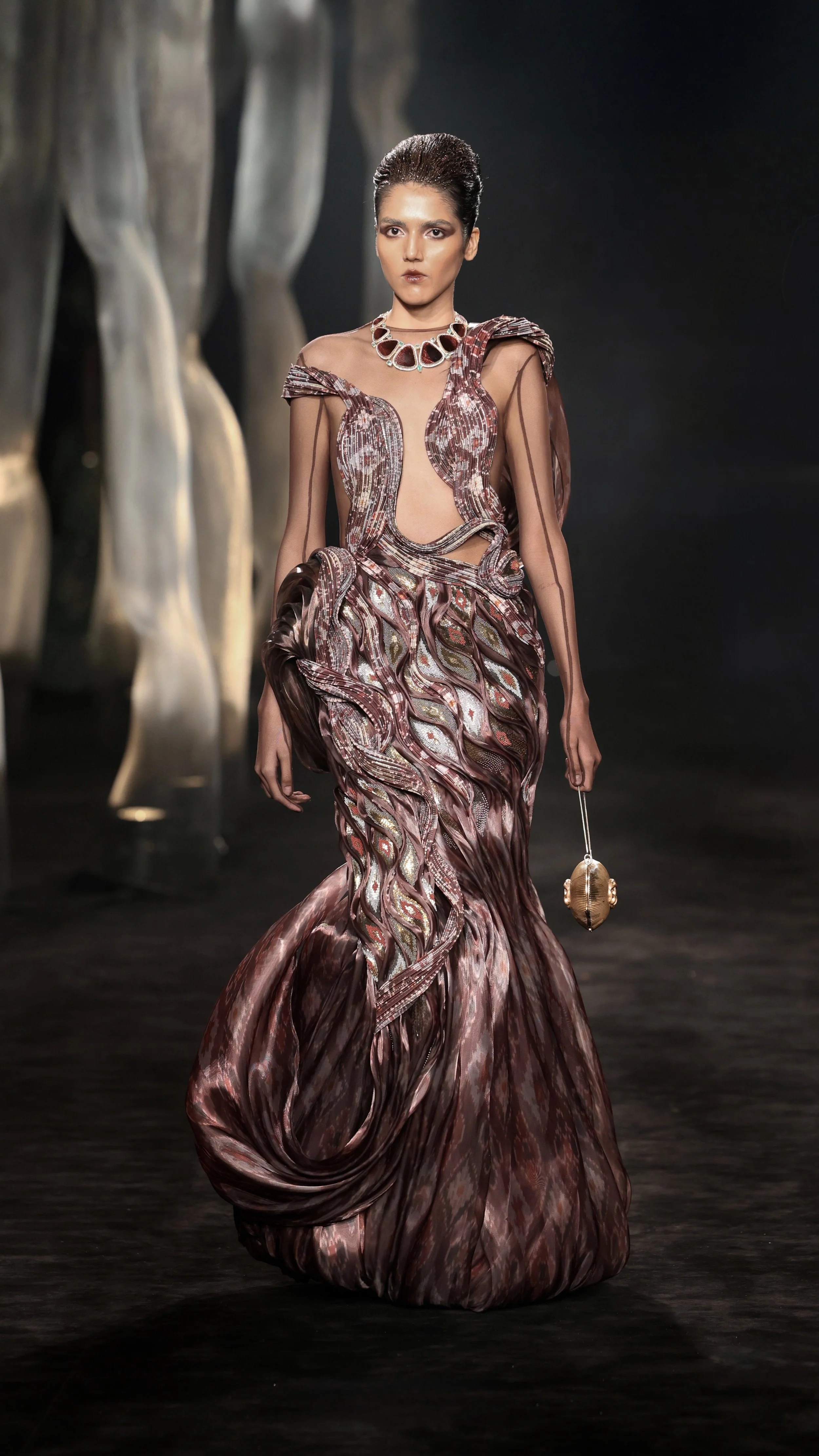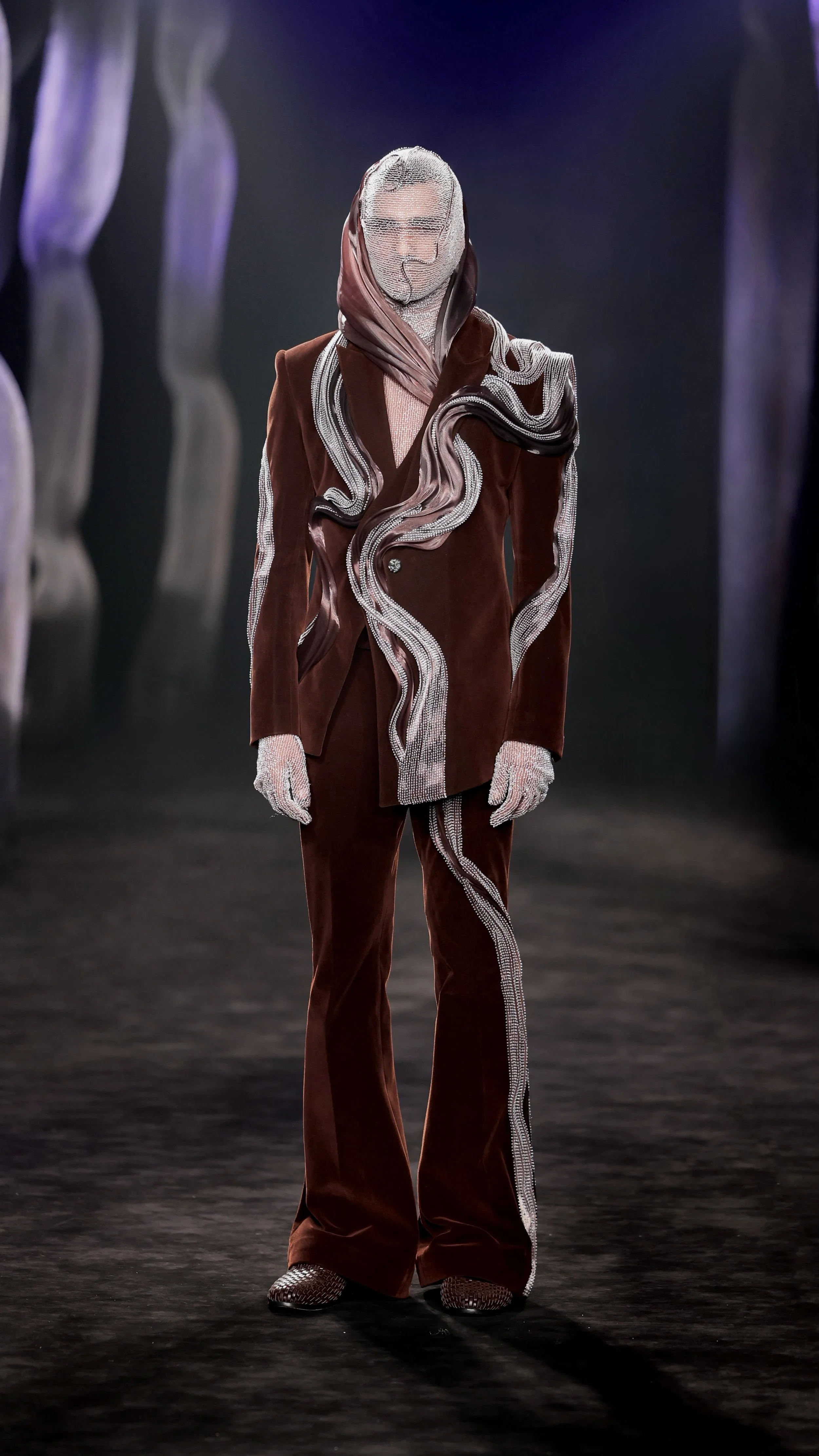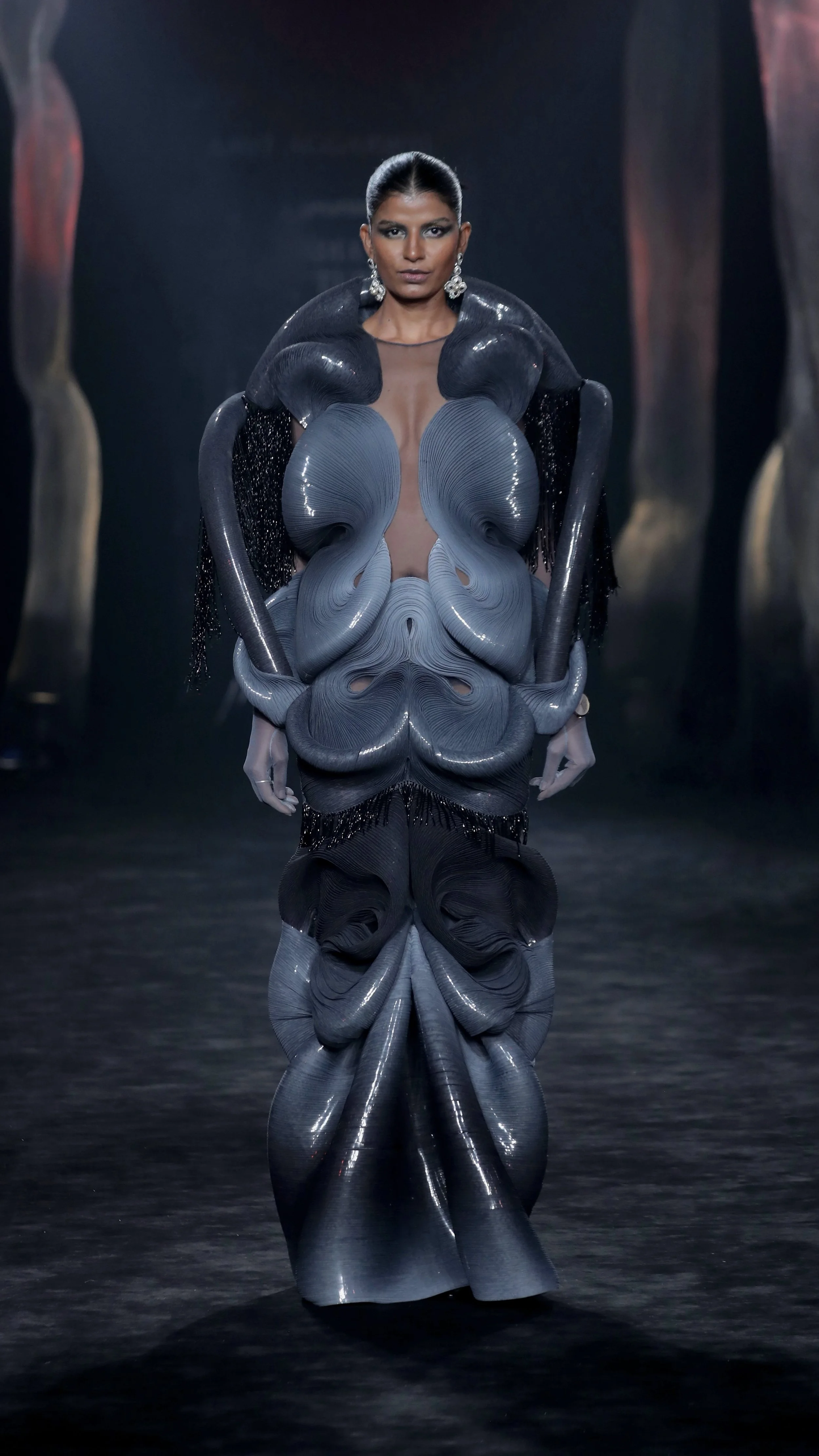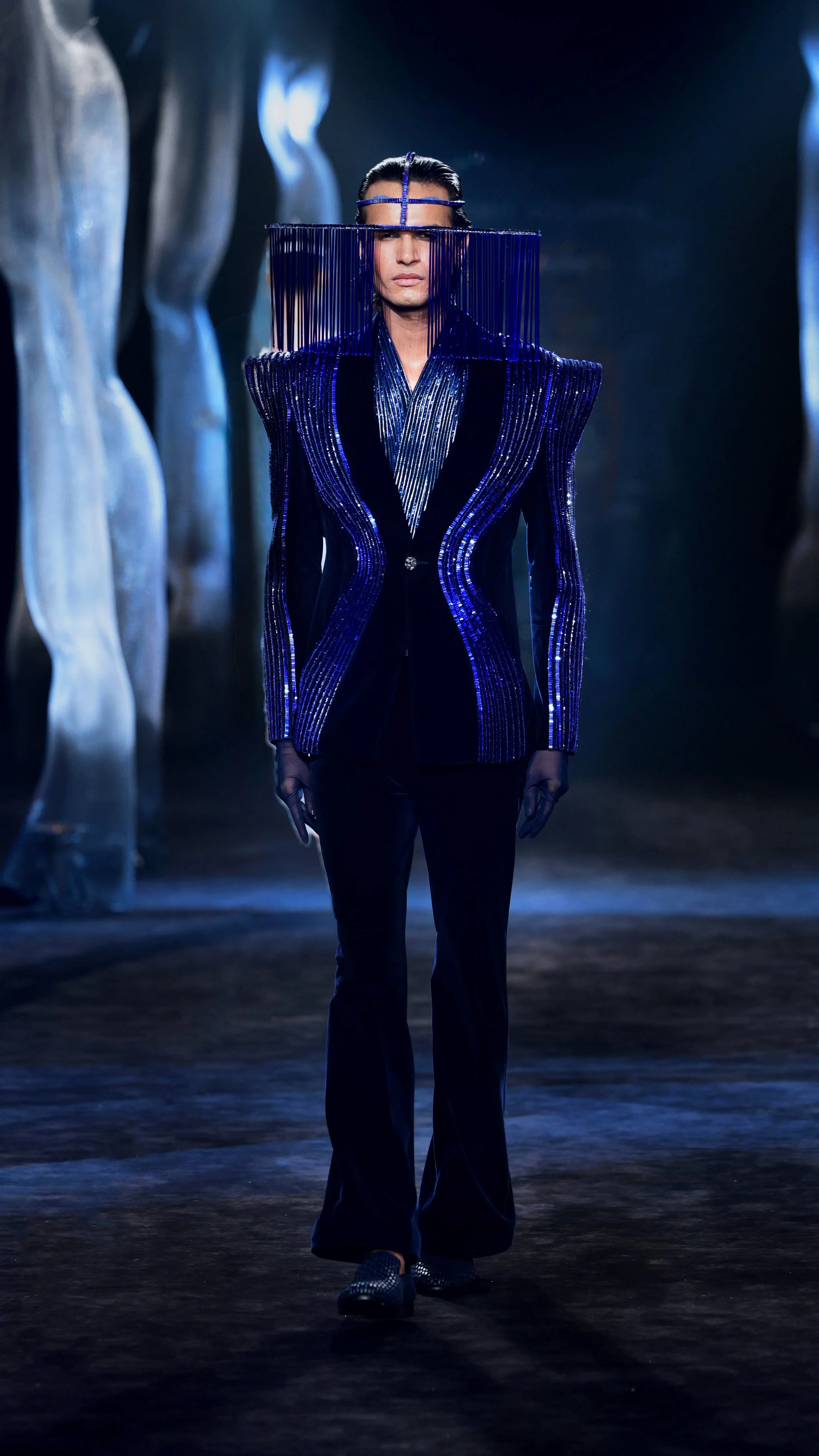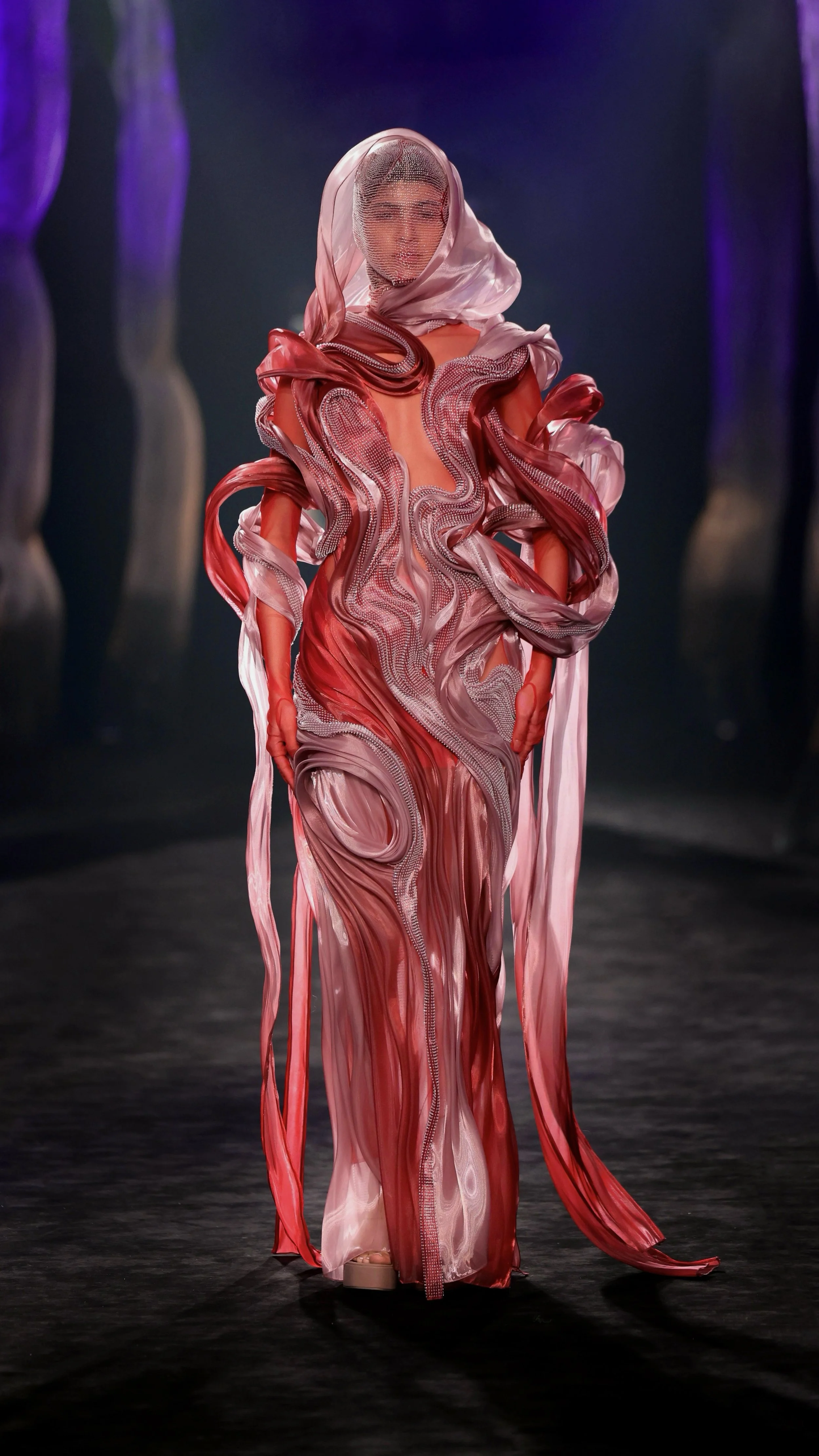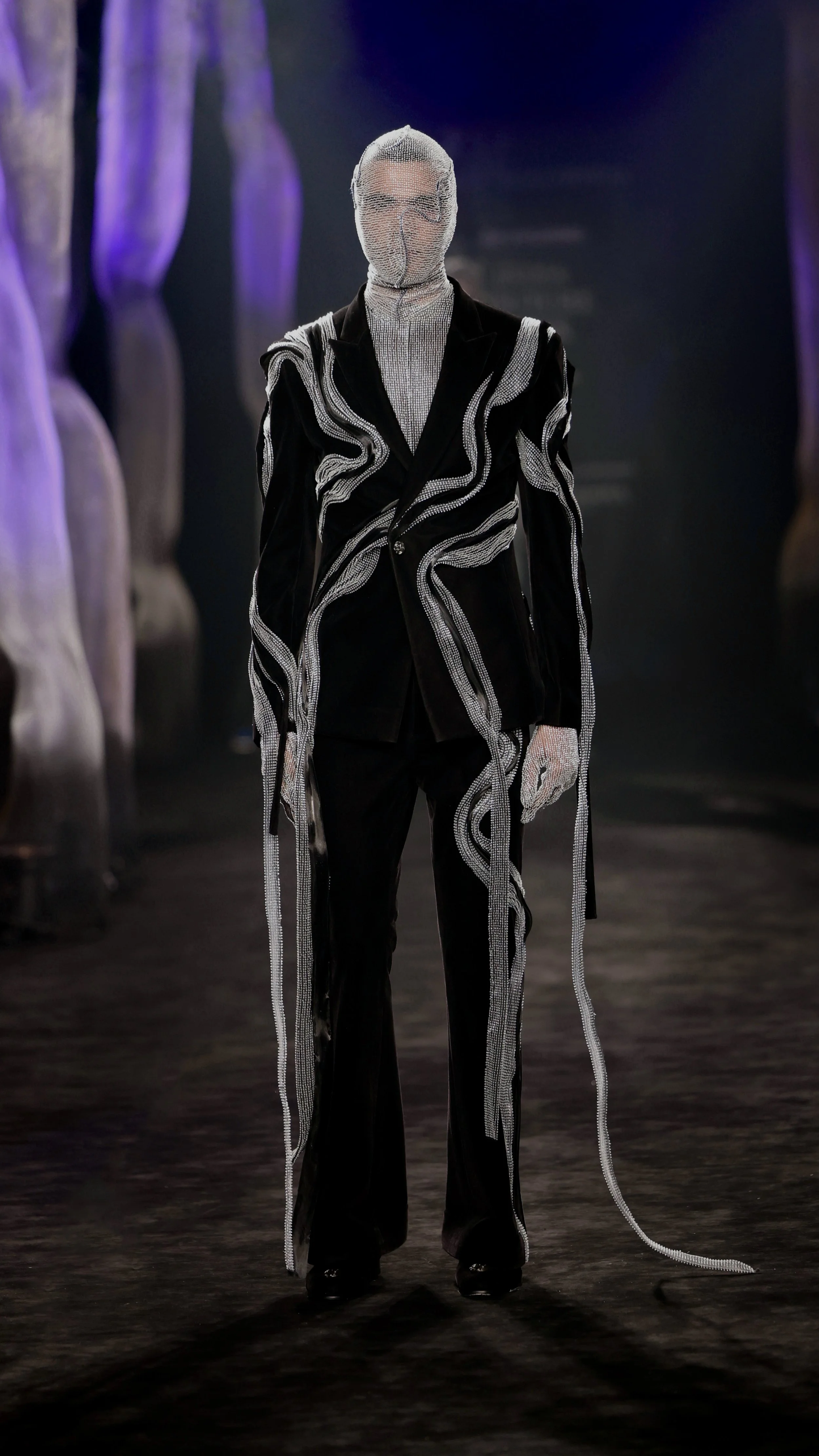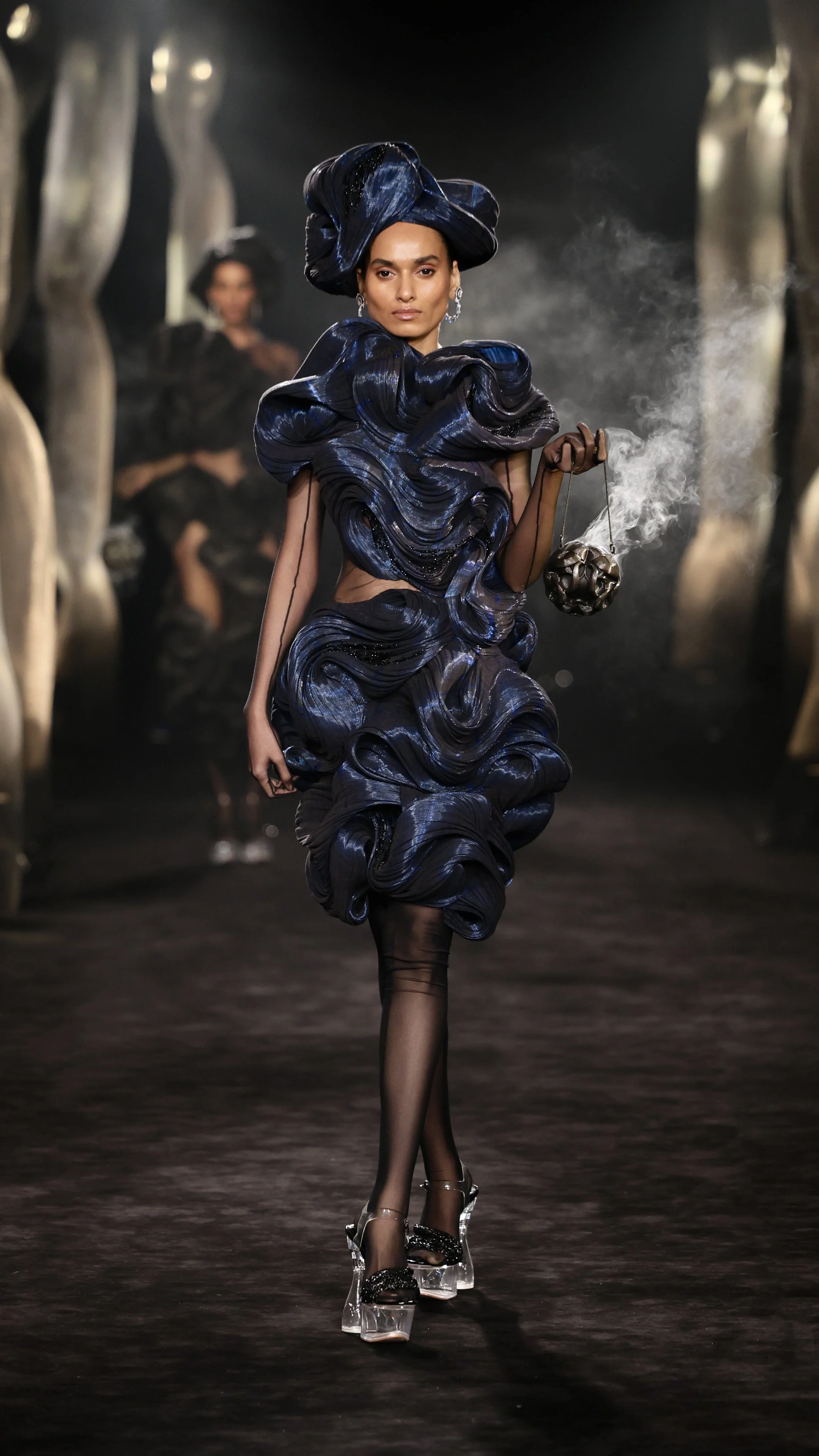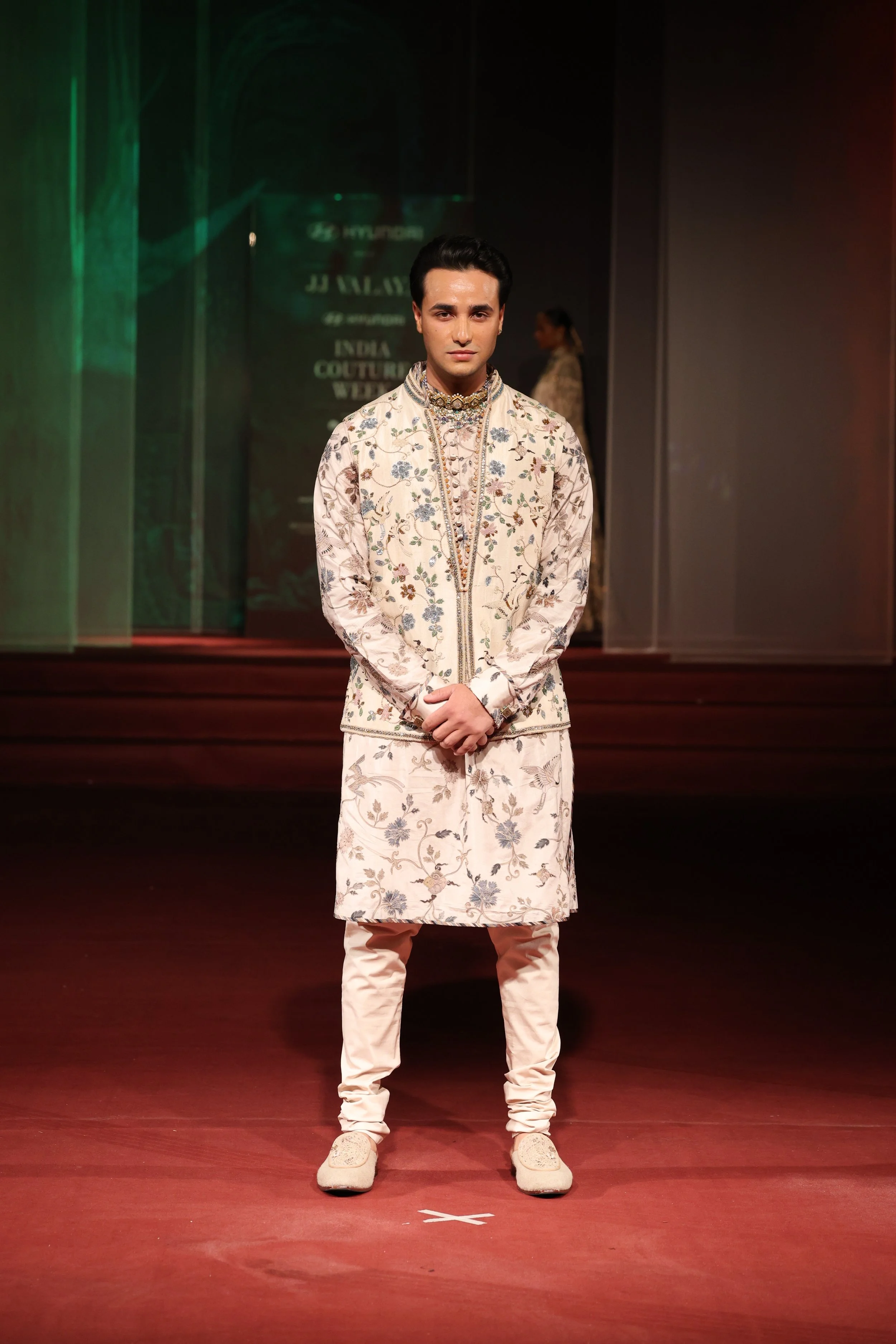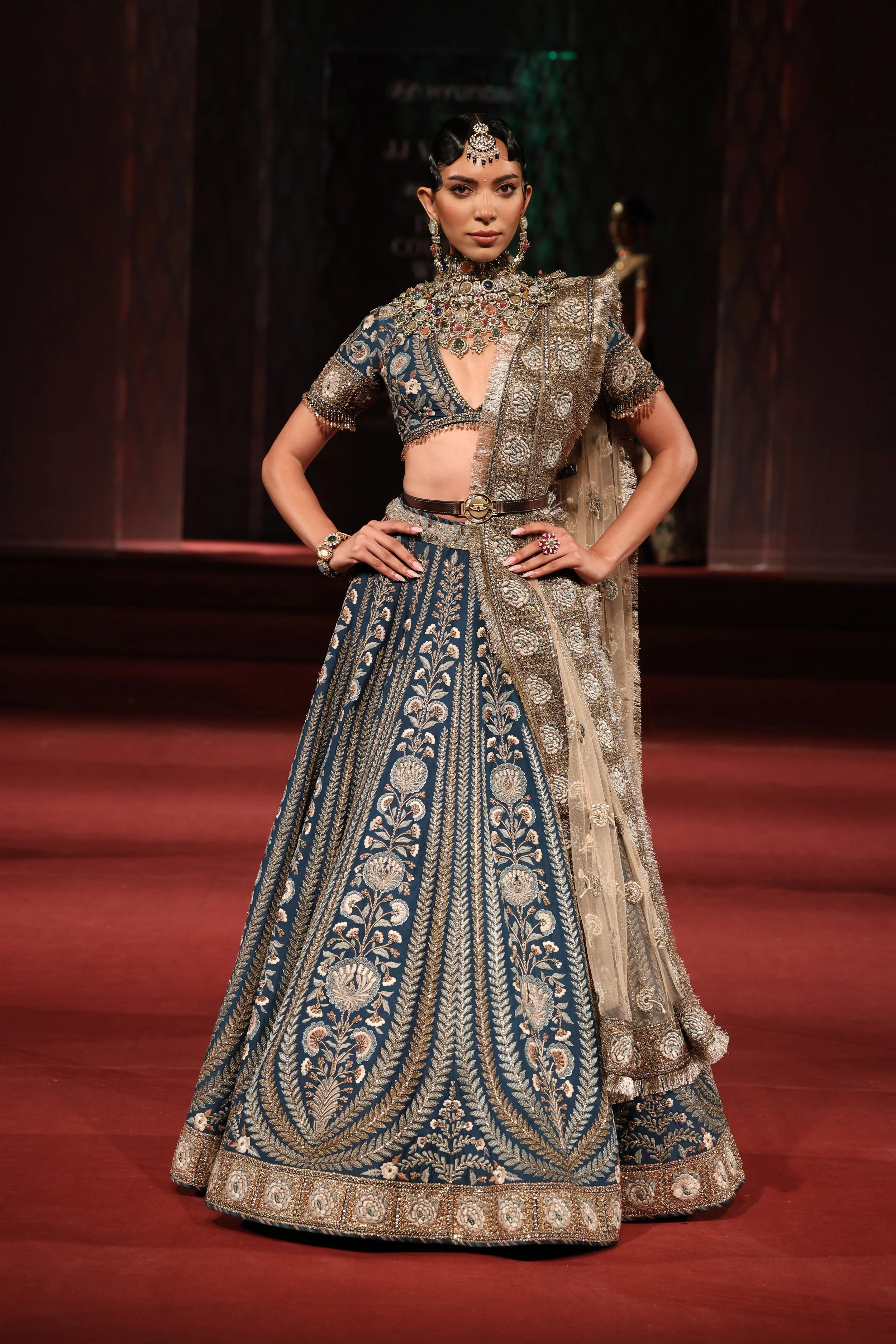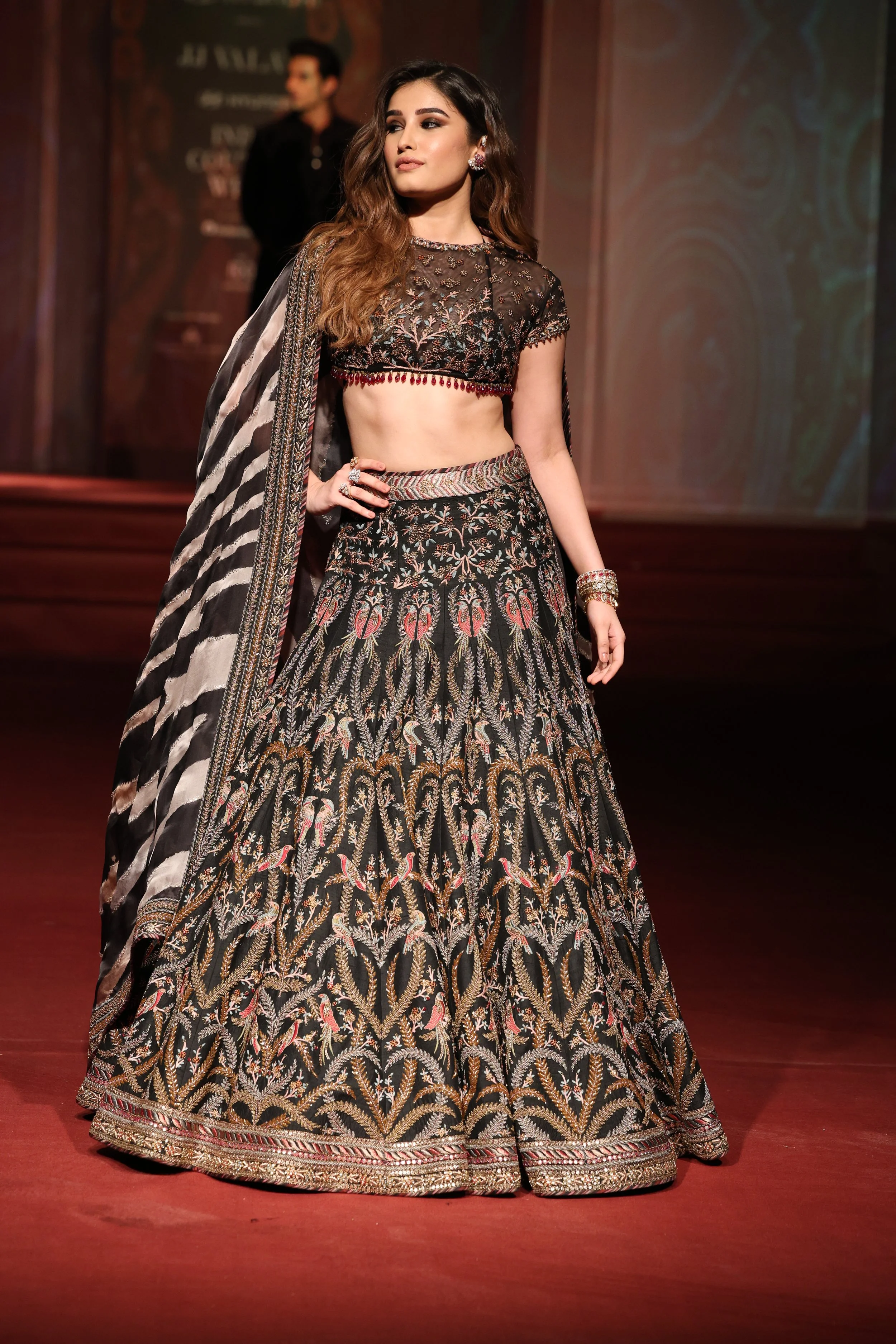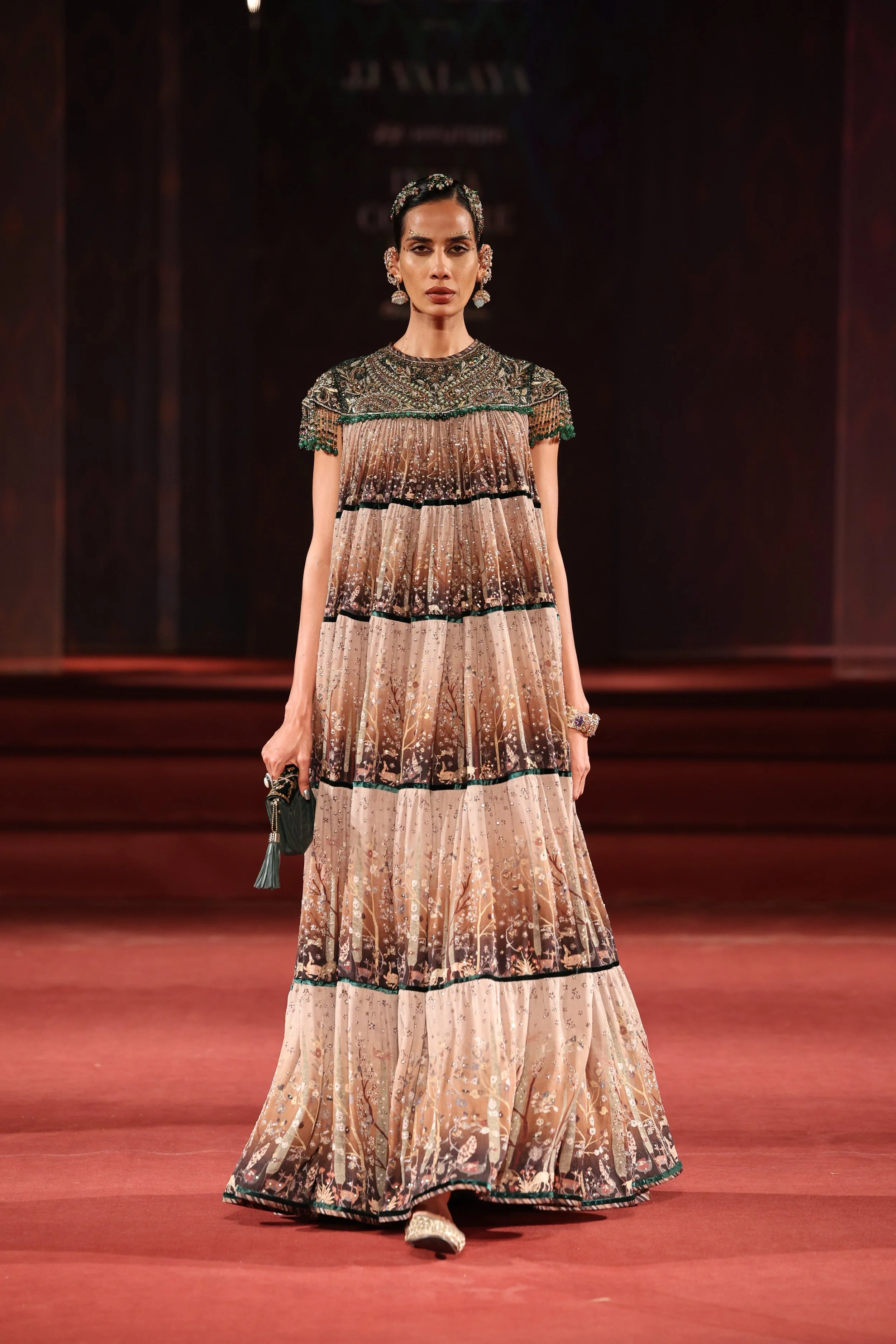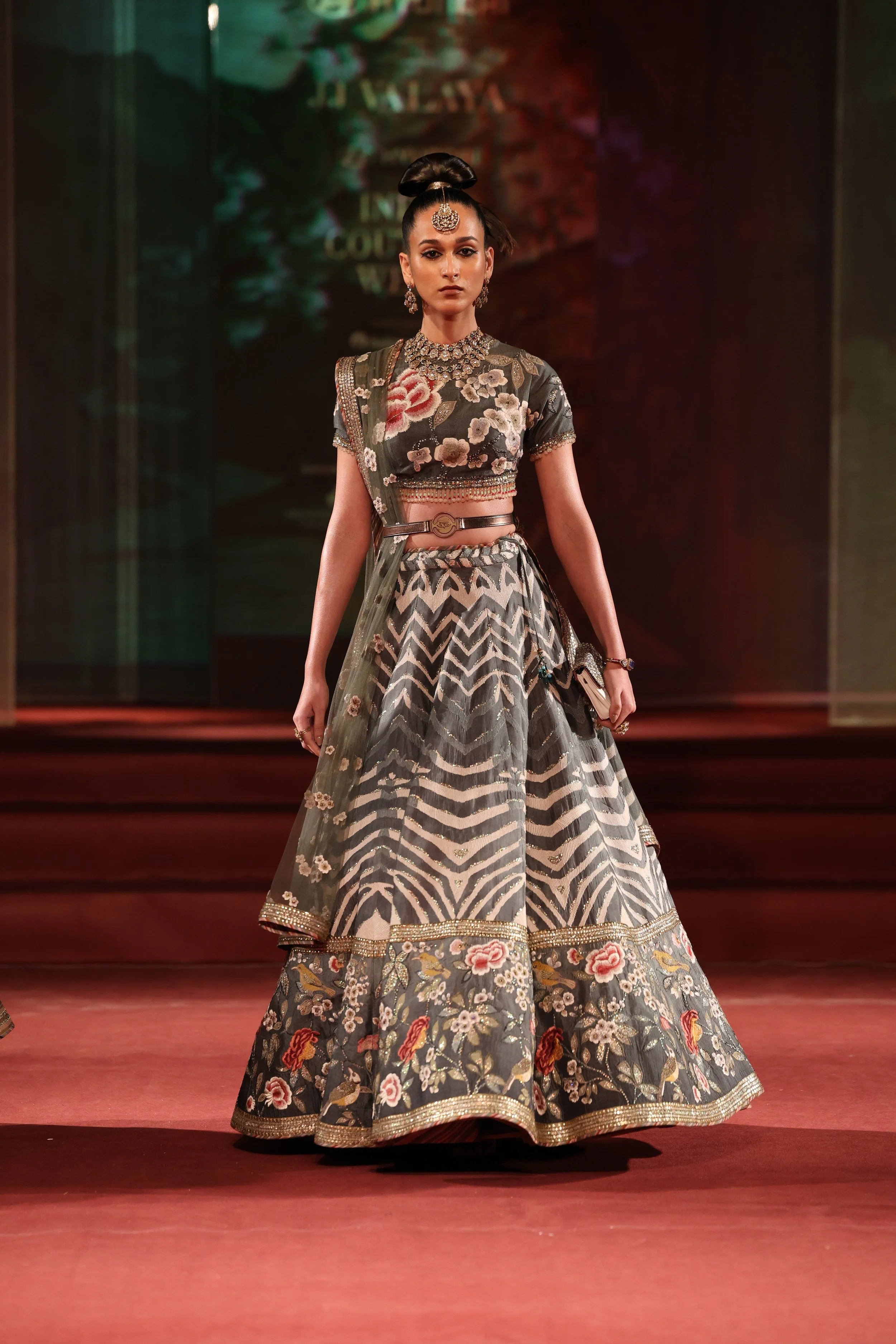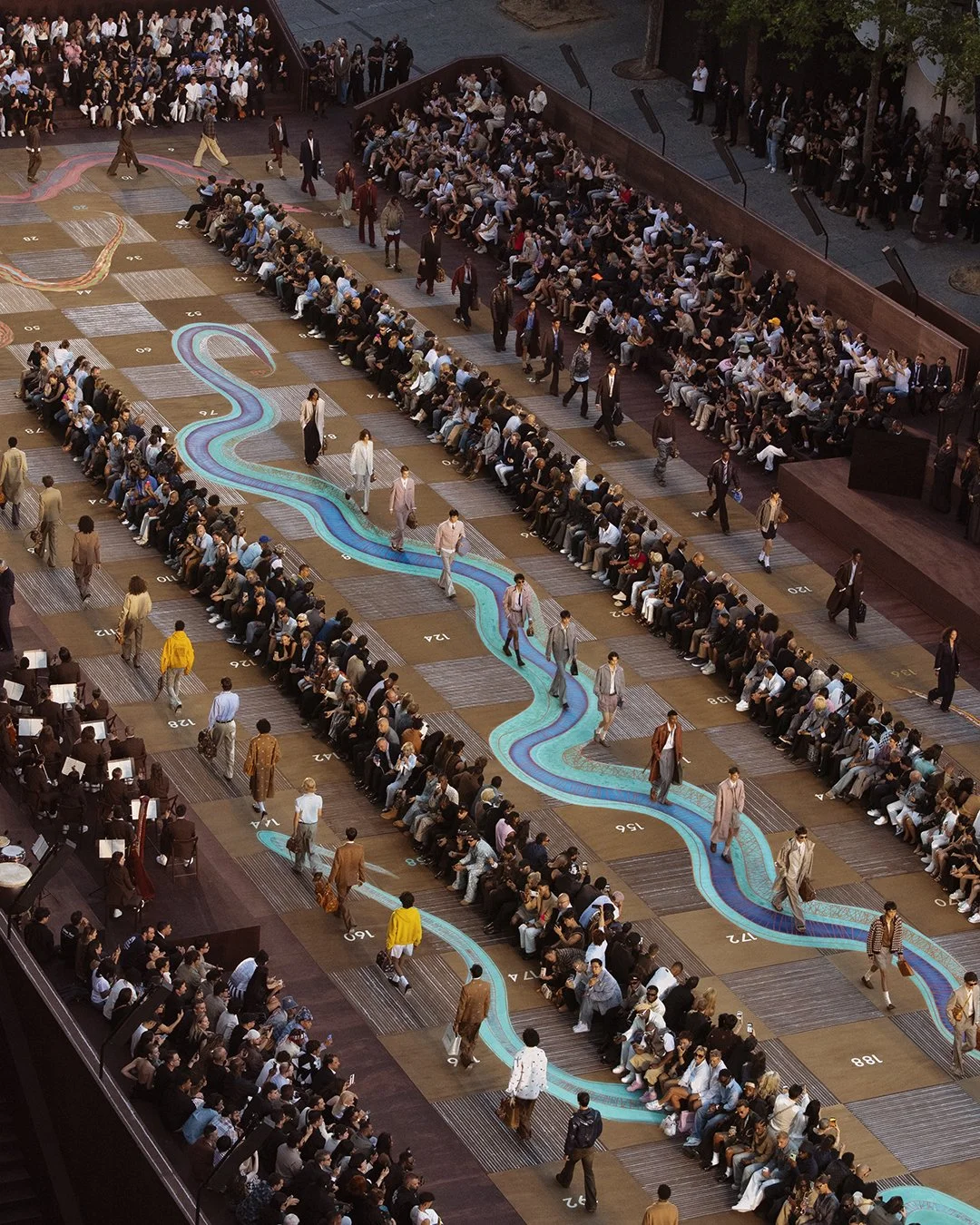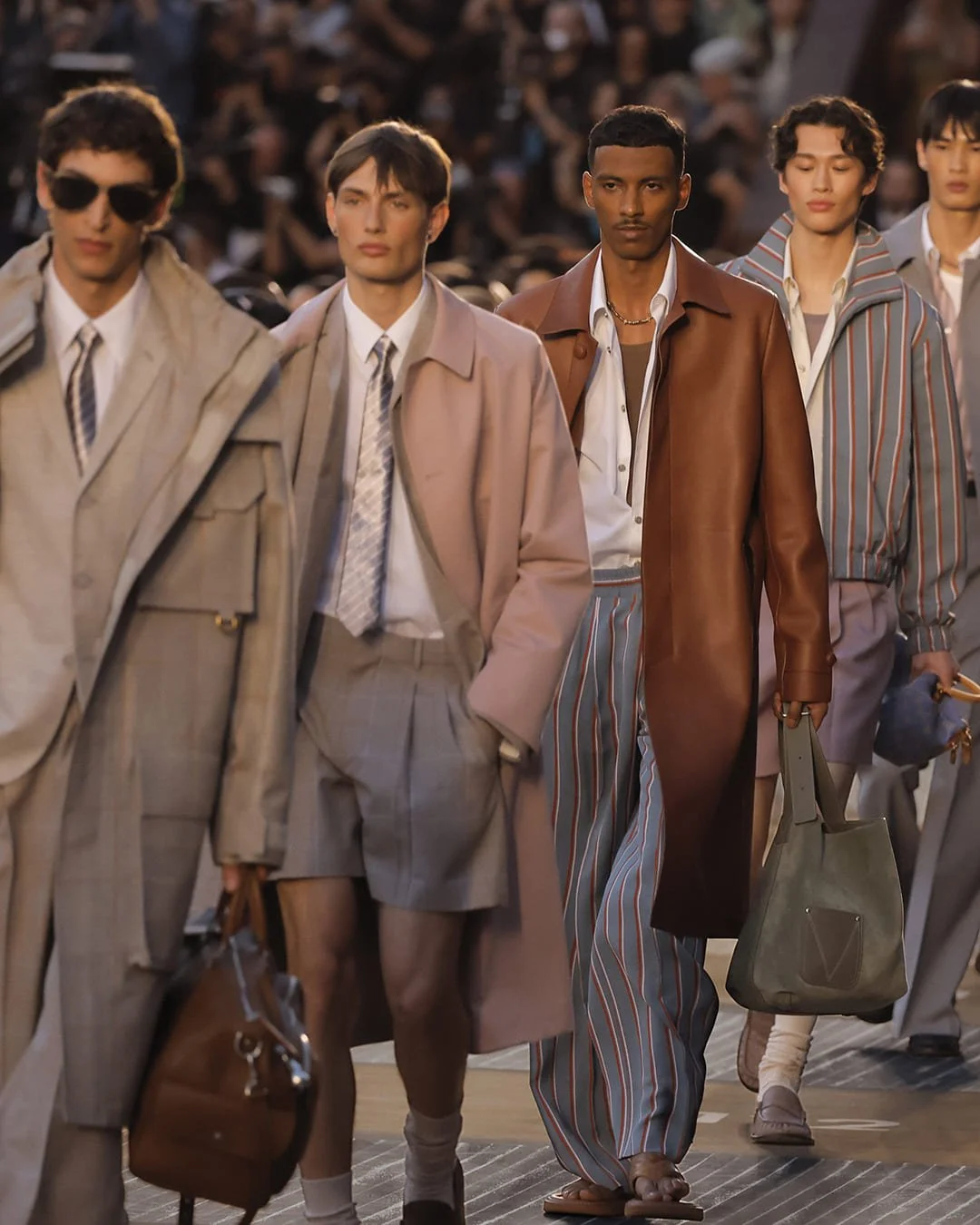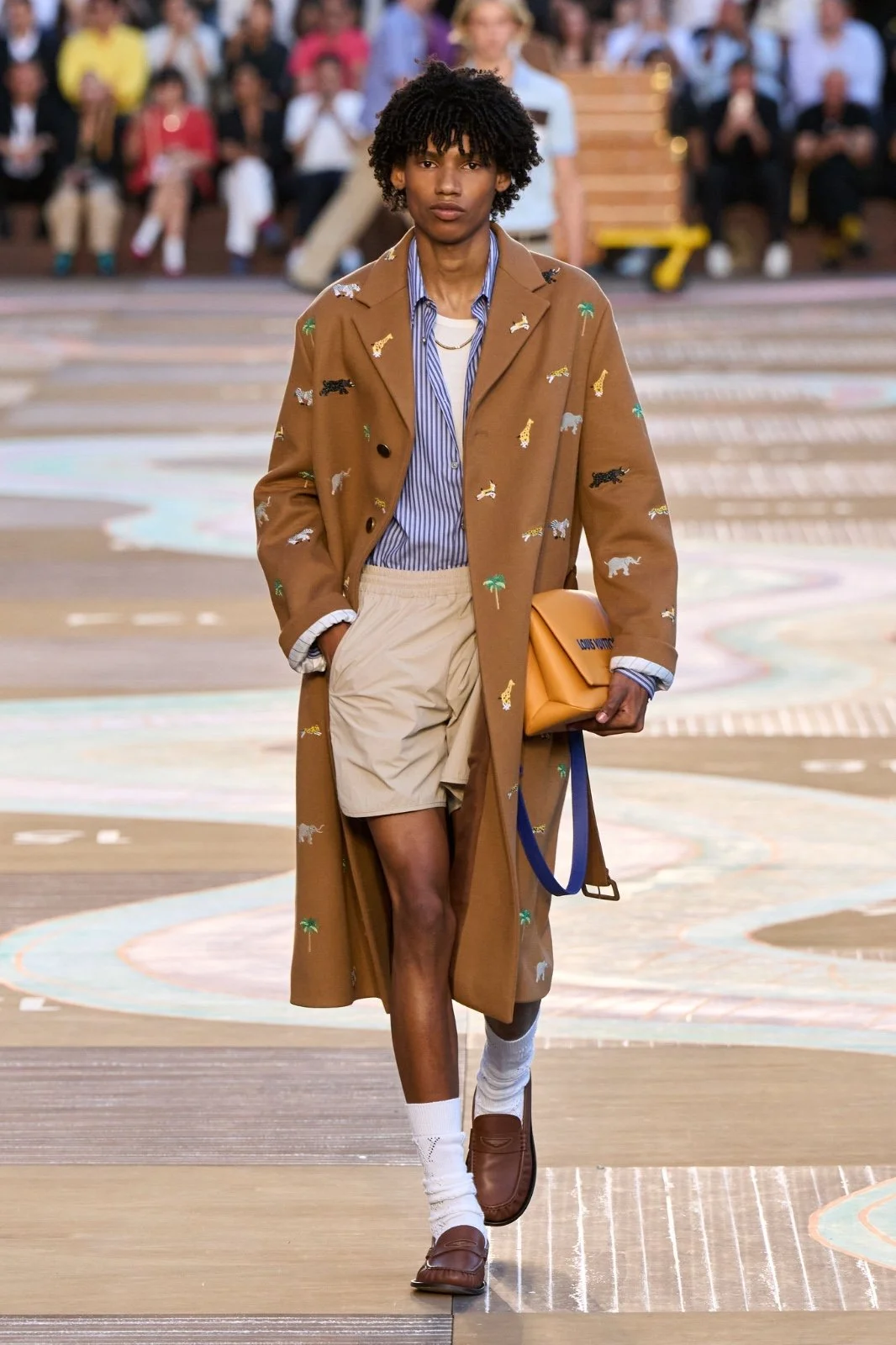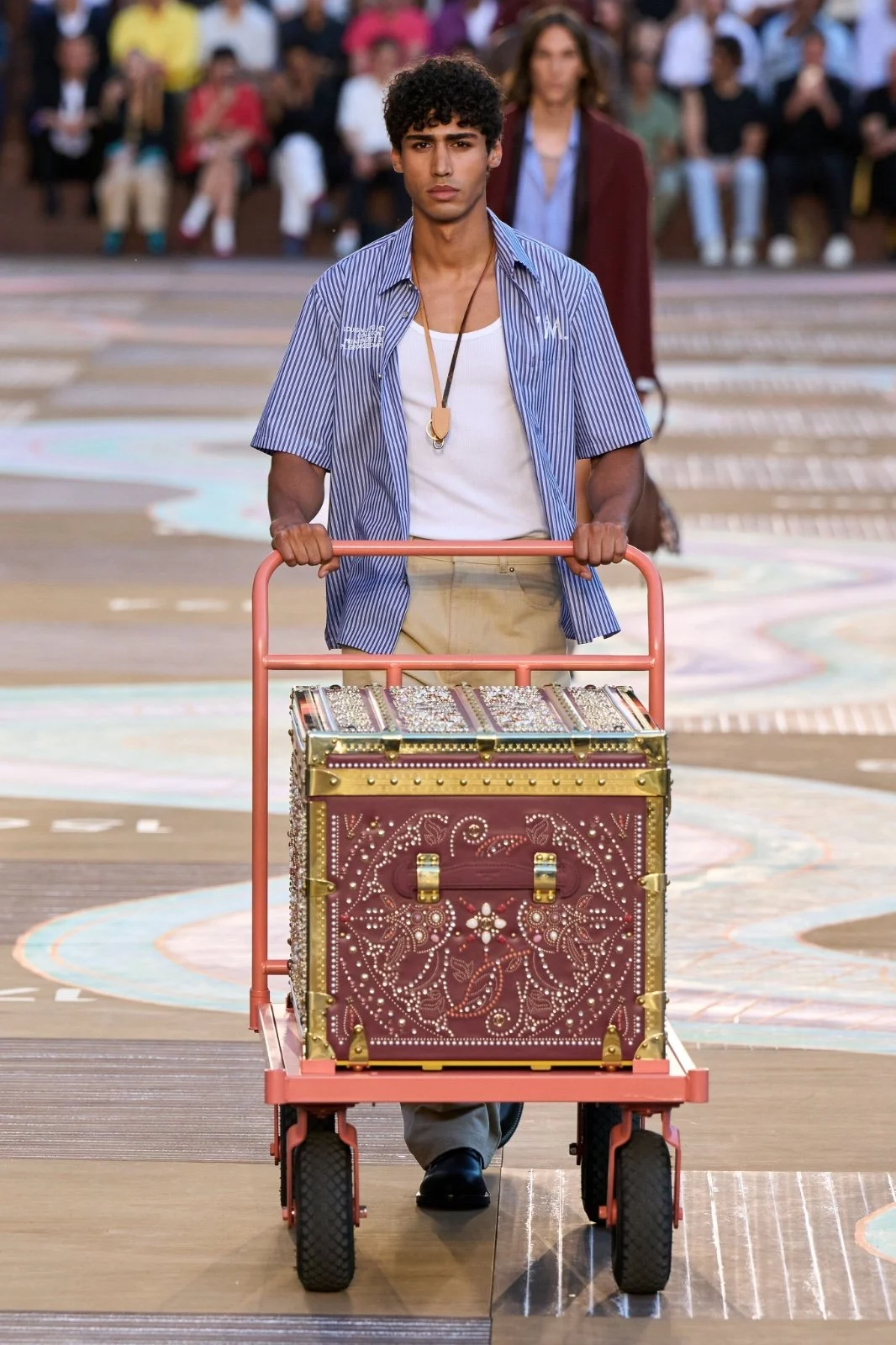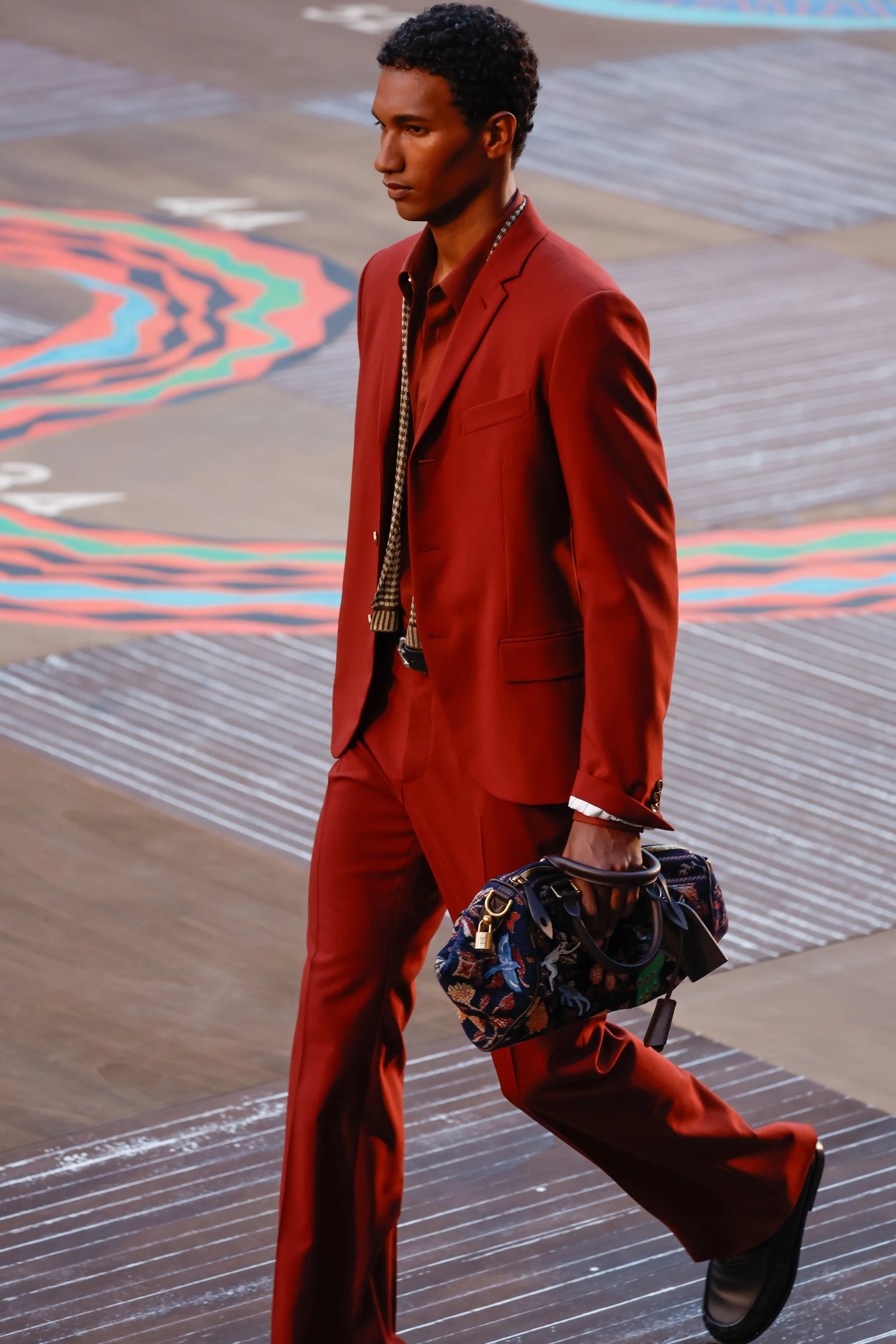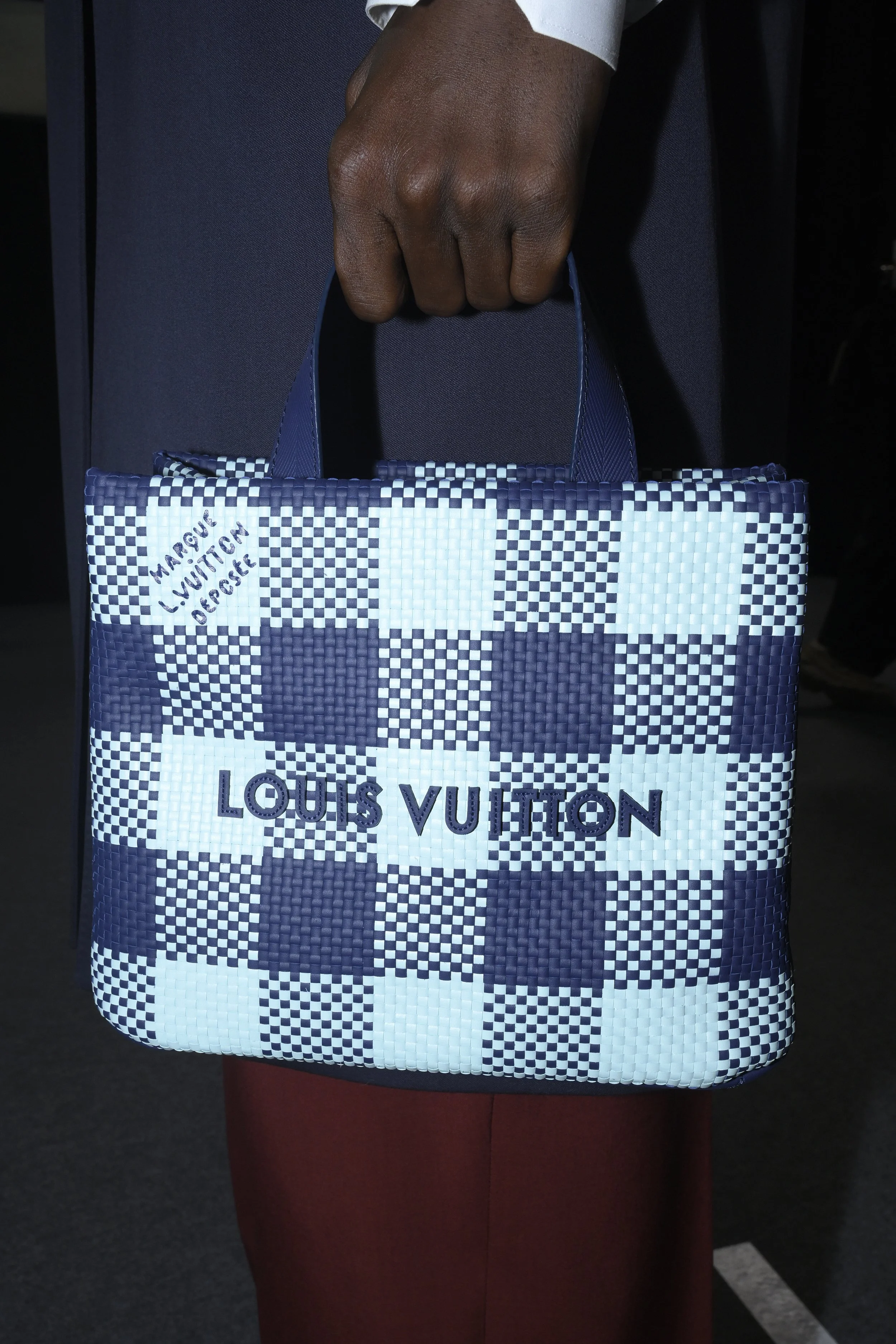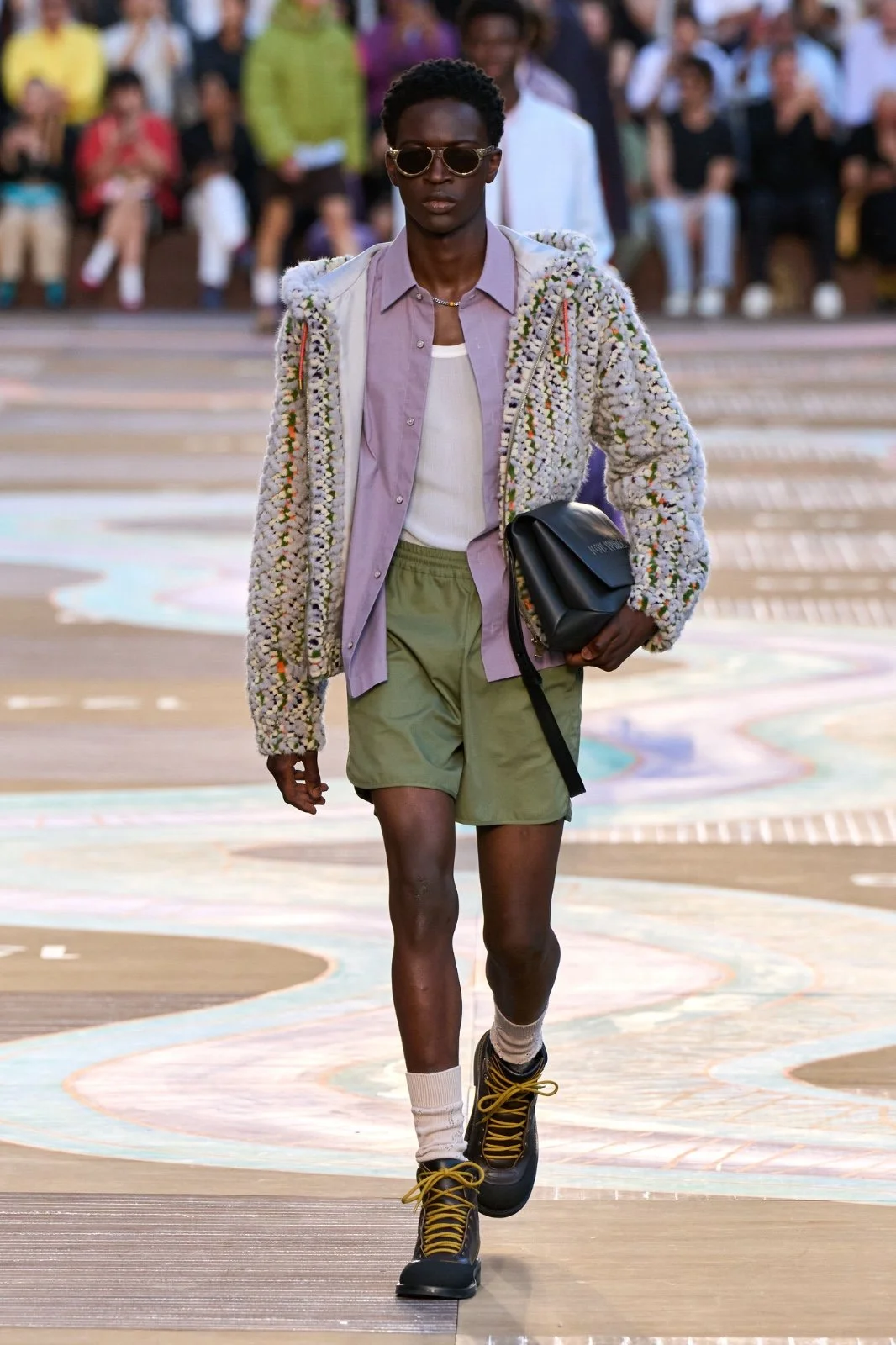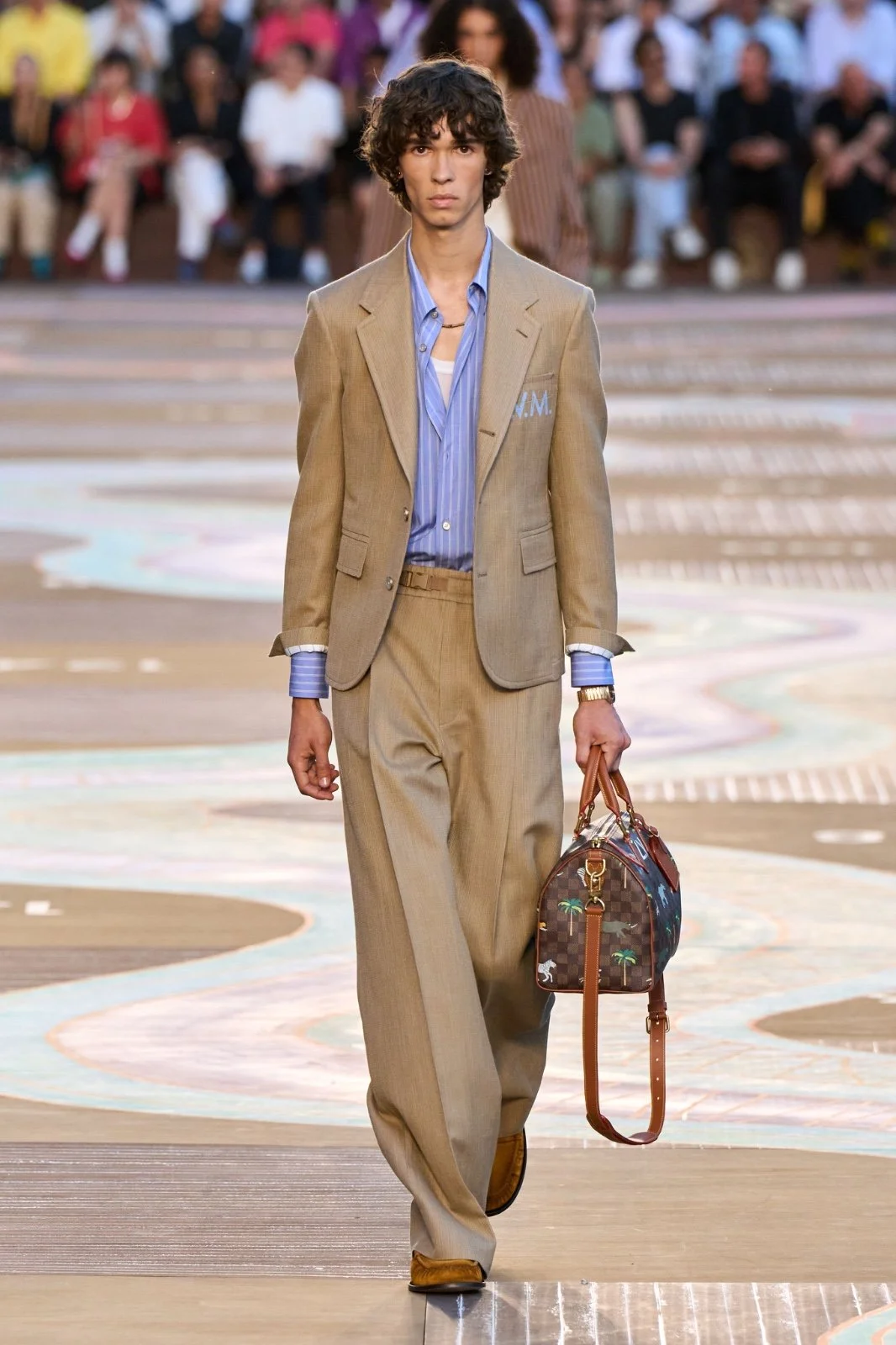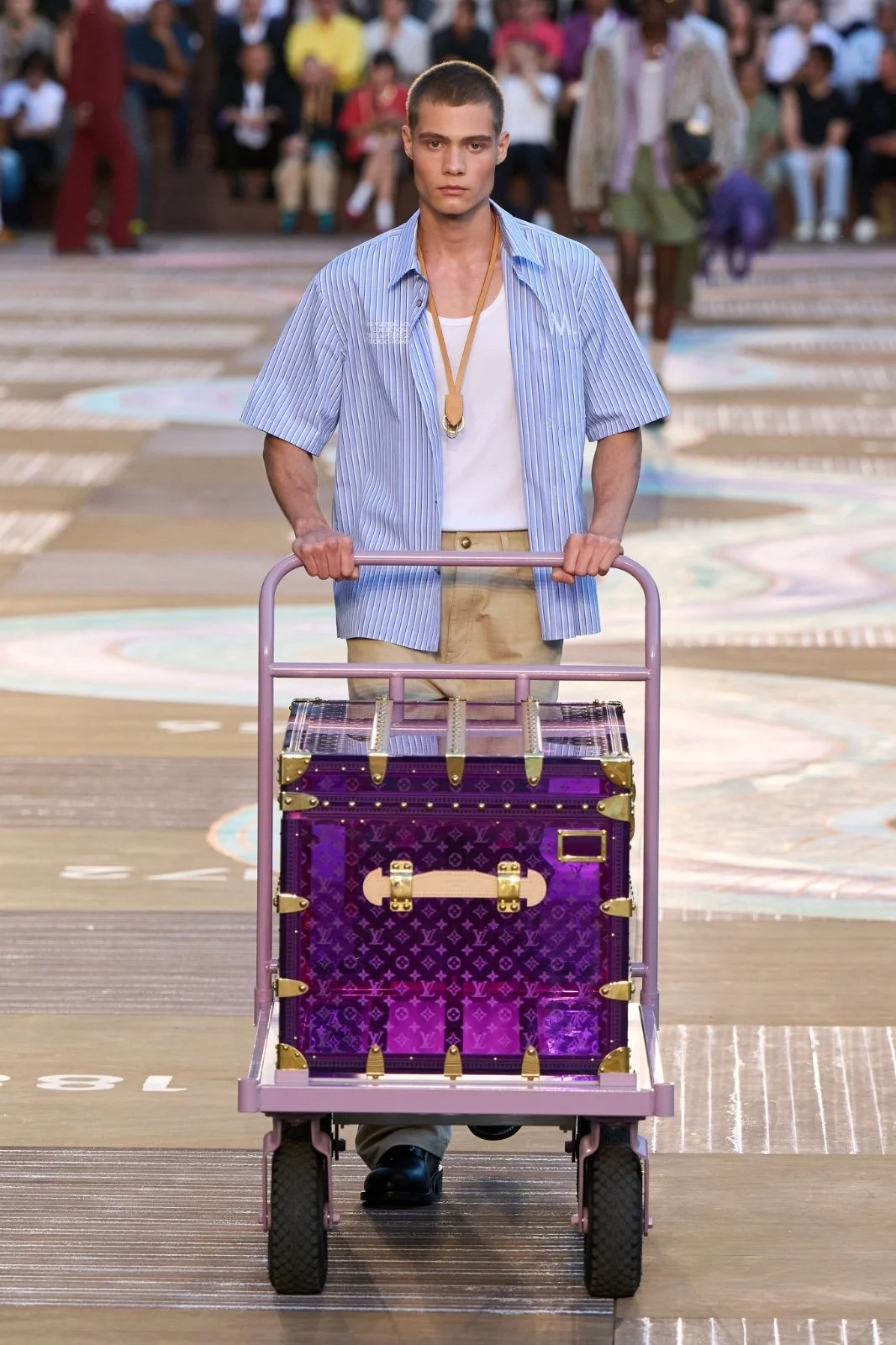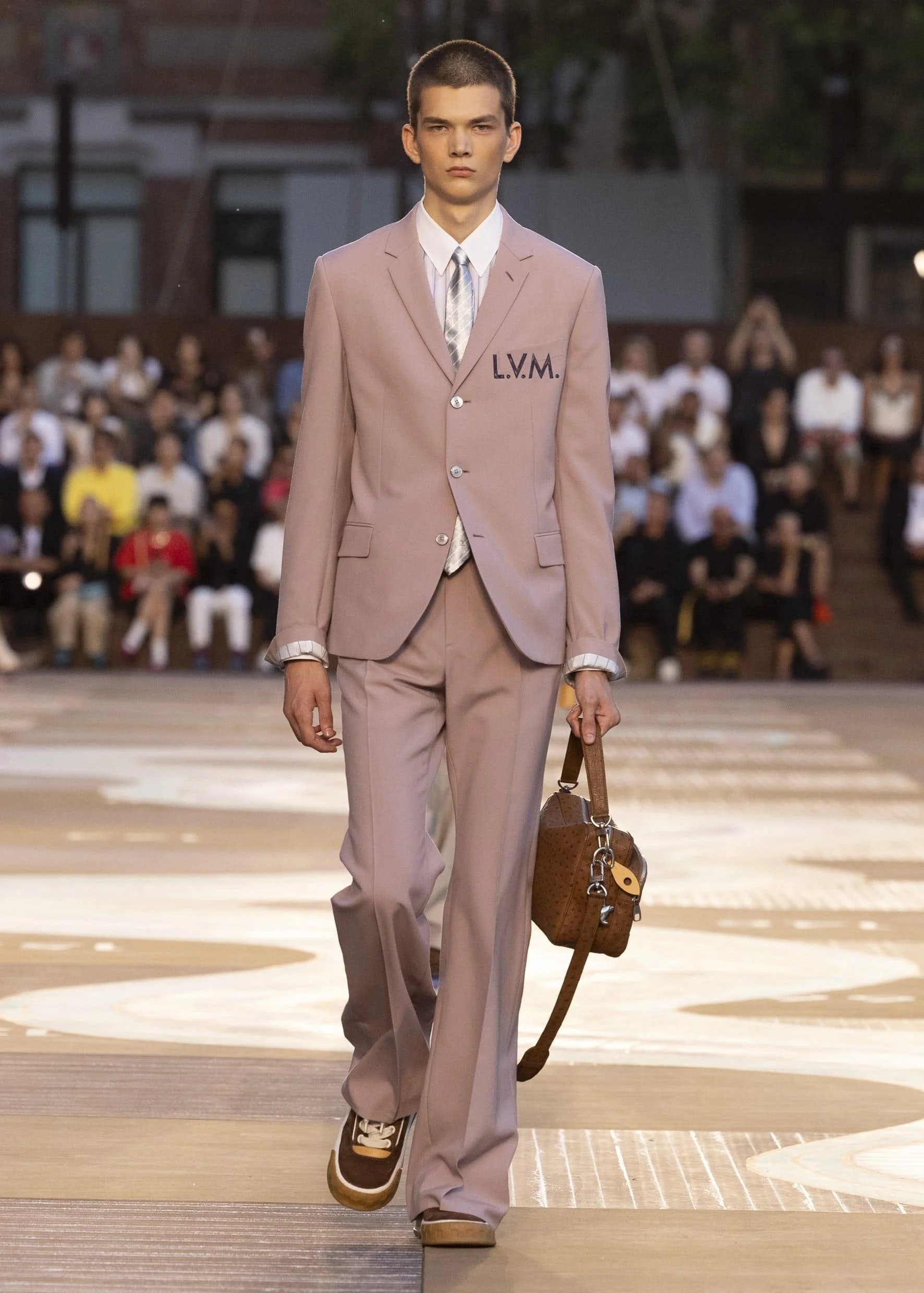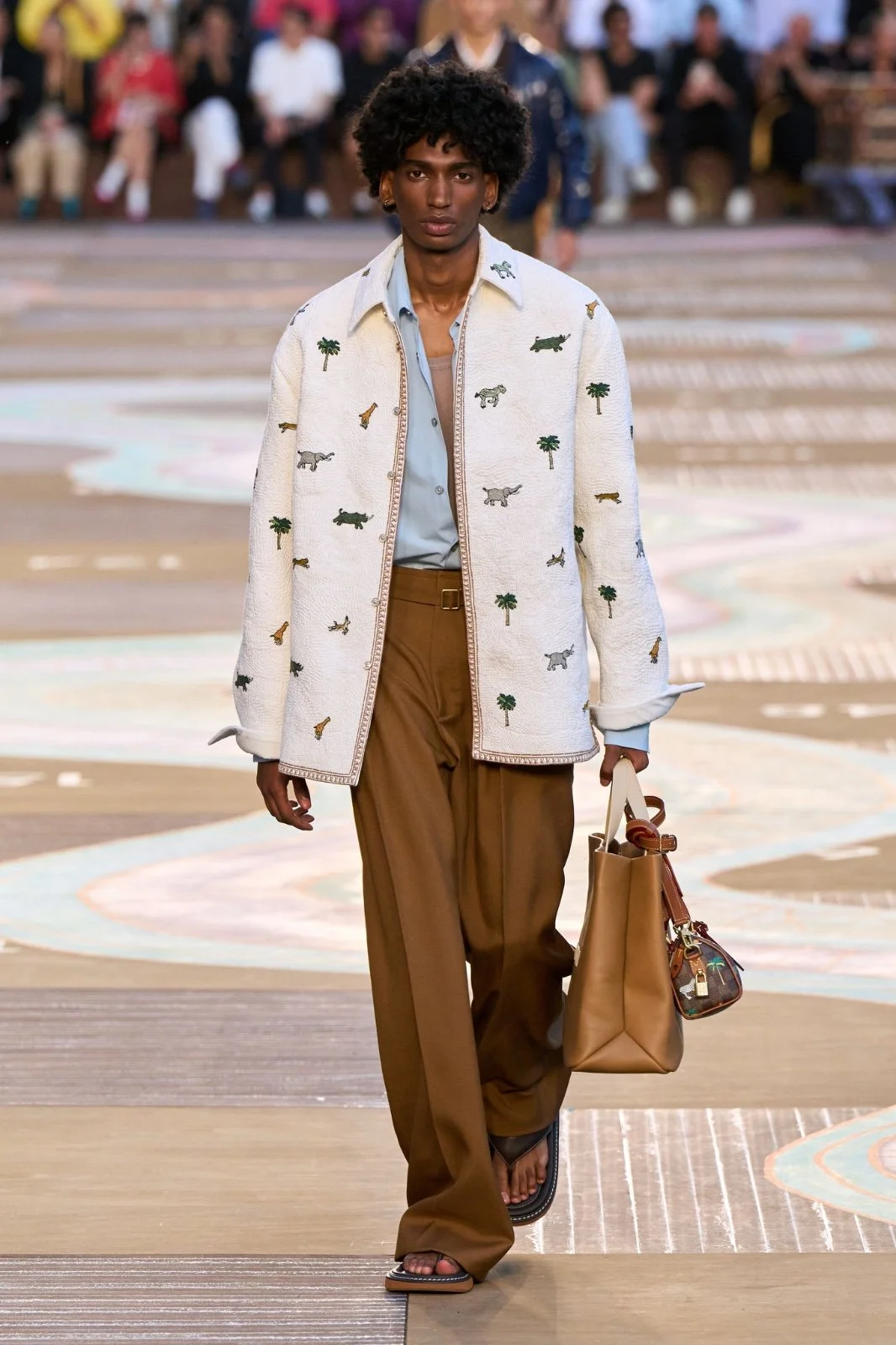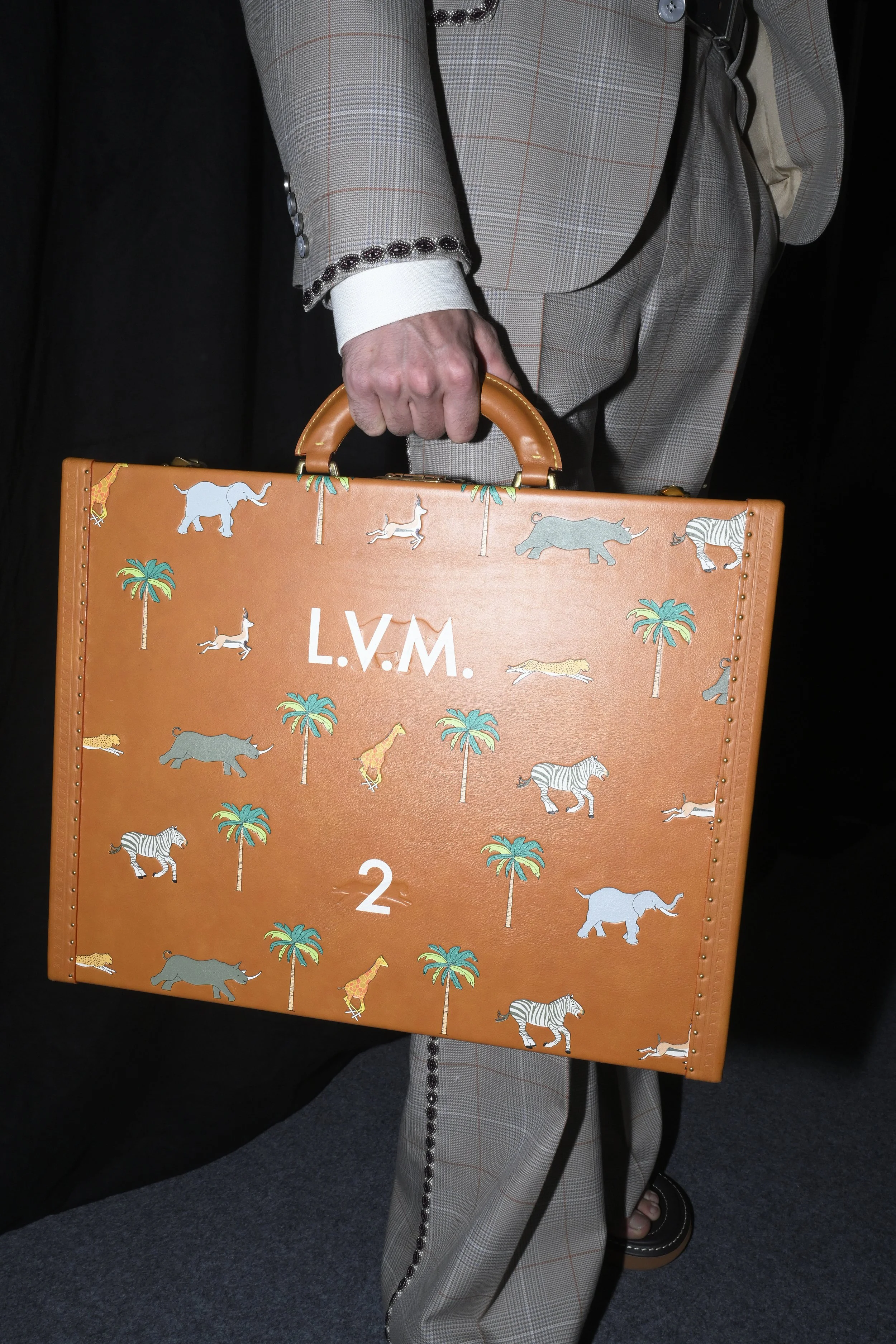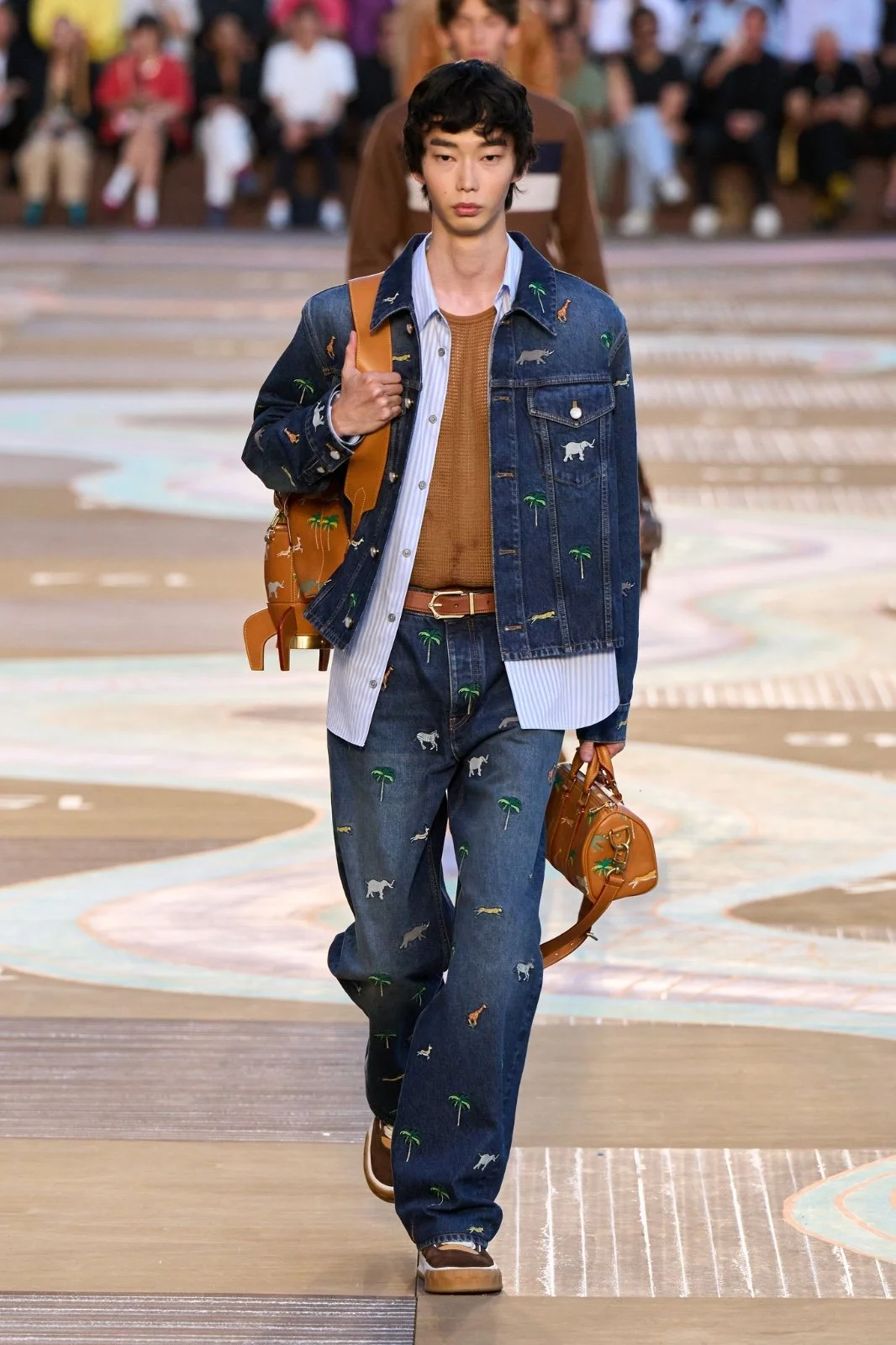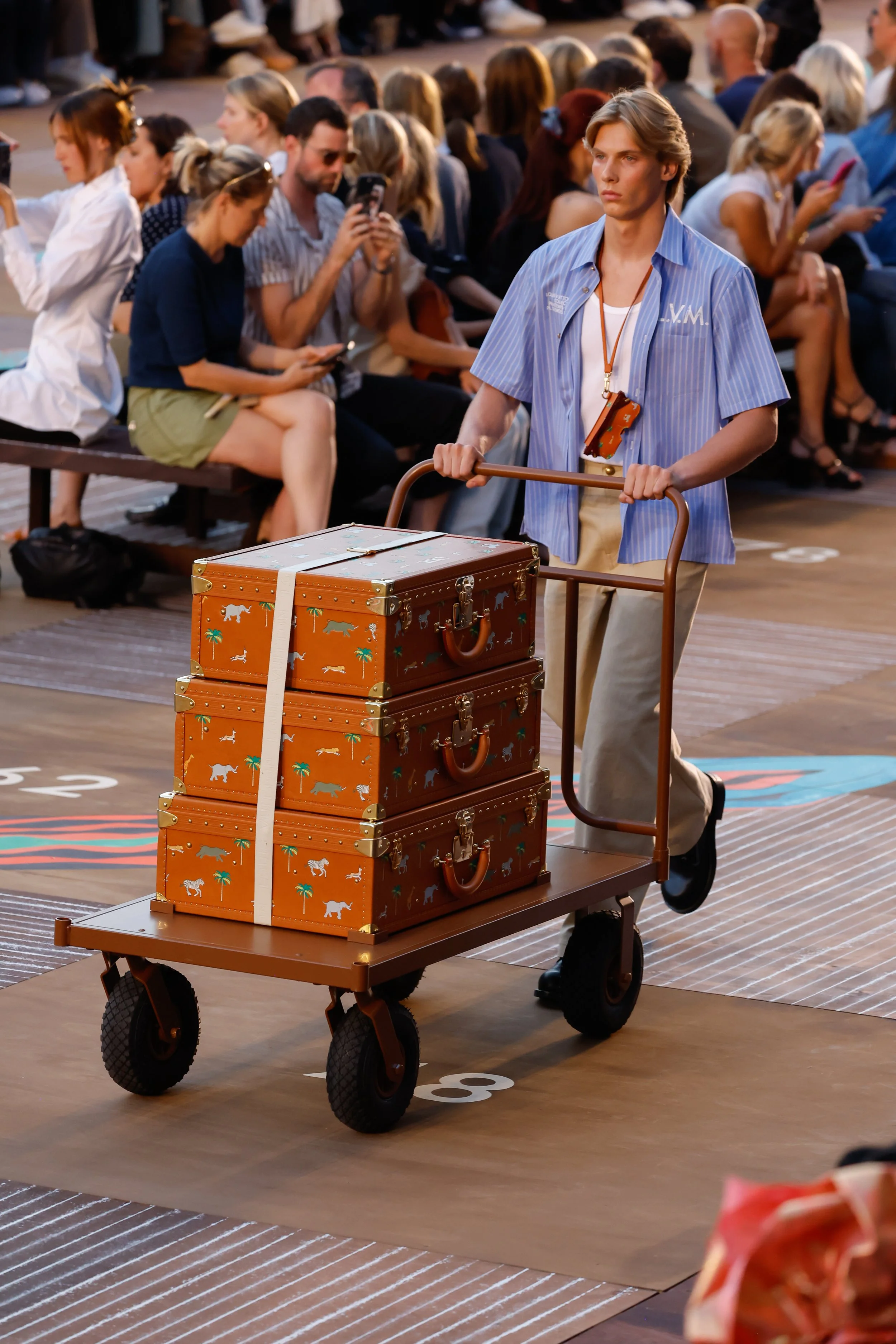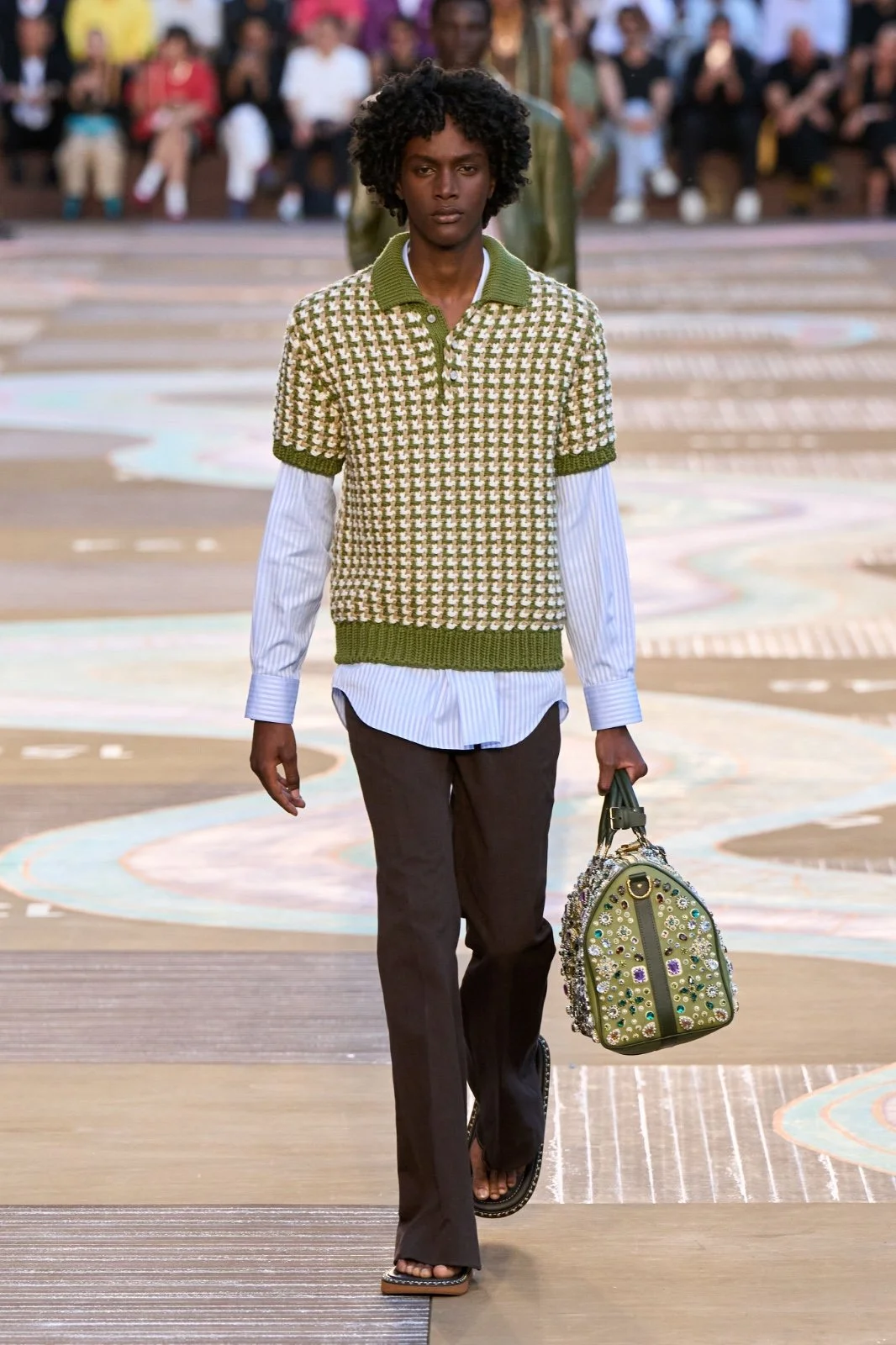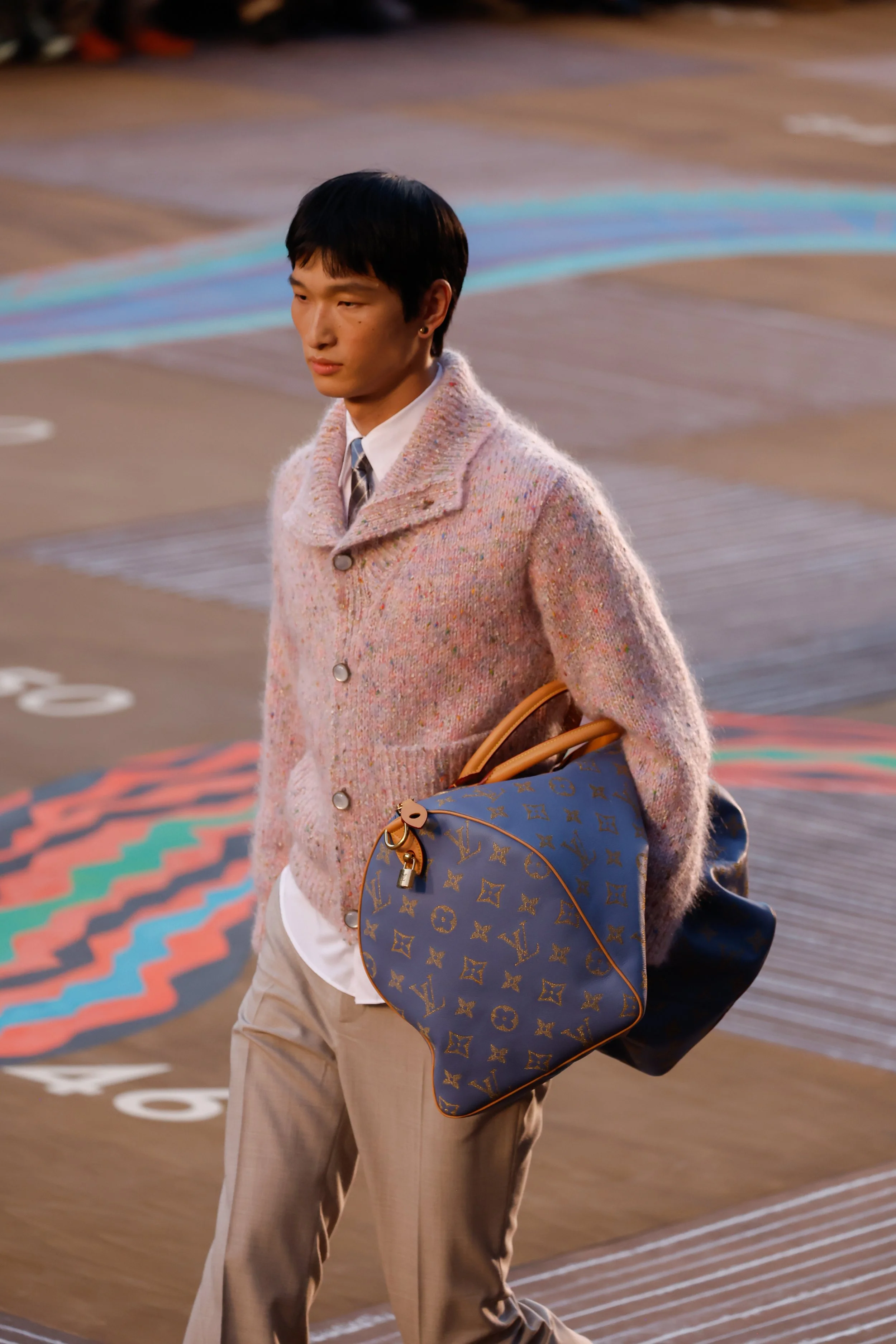text by Alper Kurtul
Rather than presenting a collection this season, Diesel launched a game. . Milan’s streets, clubs, bars, hotels, galleries, and even its hidden corners were transformed into a giant egg hunt, turning the city into a living fashion map. Fifty-five looks appeared inside transparent capsules waiting to be found, with the first five people to discover them all receiving full Diesel looks before Christmas.
Inside the transparent capsules, the clothes confront the city without fear. One of the looks features a pastel-printed top paired with a skirt made from soft, furry textures, cut into oval openings that reveal the hips with a mischievous wink. The long floral skirt that completes the silhouette suggests a memory of domestic comfort., Yet the futuristic enclosure and the glowing circular platform beneath the model’s feet transform that memory into a performance. This tension between intimacy and spectacle is pure Diesel. It is softness that dares to provoke.
Another look turns fragility into armor. A cloud-like explosion of fiber surrounds the shoulders and chest, as if the model had grown wings. The muted velvet skirt and floral tights extend the body like vines reaching for streetlights. A small handle bag hangs from her wrist like a treasured secret. The gaze is direct and unshaken. Diesel understands that beauty has teeth and that elegance can be a weapon.
SS26 proudly carries this attitude. Denim on denim is back in full form. The courage of the 2000s and the freedom of the 1970s meet in the same silhouettes. Bleached effects and visible seams bring the fabric’s raw essence to the surface. Distressed satin denim pulls you in with a single touch. Grey skirts, hair clips clipped into bags, leather cuffs, and metallic footwear celebrate experimentation as identity.
Accessories become characters in this story. Bags sit at a midpoint between sculpture and utility, and some are treated almost like wearable secrets with compact shapes that ask the viewer to come closer. Silver shoes and buckled heels ground the looks in a crisp present tense while futuristic jewelry sits high on the collarbone like talismans from a world where fashion and survival share the same language. Every piece is a reminder that attitude requires an object to anchor itself in the real. Diesel offers those anchors with confidence and mischief.
Jumpsuits appear as if psychedelic animal skins were taken apart and rebuilt again. Knit pieces wrap the body while refusing every expected rule. Punk-like defiance blends with pop-like shine in a single movement. Diesel chooses to redefine luxury rather than hide beneath its shadow. Fashion is a participatory act. That is why the collection is not restricted. It is shareable. People are hunting for these looks, because fashion is finally for everyone.



